PRIORAT
This piece is part of our series on Priorat, one of the great wine regions of Spain. We visited in July 2019.
Cicadas buzz in the pine trees. Goldfinches dive and soar in the cobalt sky. Is this the most wonderful vineyard on earth? If not, few rival it.
Welcome to Priorat. The magic is palpable, quiet, like a secret.
It’s remote, but it shouldn’t be; Barcelona lies only 90 minutes away.
The narrow roads wind wildly here, so buckle your seat belt, wine-loving traveler.
We’ll show you the region’s grapes, the soil, the wines, a bit of the food, and the culture—and rest assured, each piece of the puzzle tells a story unique in the wide world of wine.
THE PRIZED GRAPE OF PRIORAT
At the base of the dramatic cliffs of the Montsant, bright green grapes bask in the hot July sun. It’s too soon for veraison—the process by which the skin of a red grape turns red—so they might be red grapes, they might not.
Look closer. They’re Cariñena grapes—the prized red grapes of Priorat—you can tell because of the slight reddish blush on the stems of the leaves.
Before we arrived we thought Garnatxa—the Catalan word for Garnacha—the Spanish word for Grenache—was the prized grape of Priorat. Nope. Many of the region’s finest, most expensive wines are crafted from Cariñena—single vineyard, old vine bottles of pure Cariñena.
We begin the journey here because you can’t understand Priorat without understanding this grape.
“You can’t understand Priorat without understanding this grape.”
What is Cariñena?
You may have heard its more widely-accepted name, Carignan.
It’s surprisingly ubiquitous. Few noble grapes are more widely cultivated—in France, the only vine that enjoys more acreage is Merlot—and yet the grape is unknown by most wine drinkers and unloved by most winemakers. Wine expert Jancis Robinson calls it “curious,” and reports its many failings: It resists machine harvesting because it grows unusually thick stems near its grape clusters.
It’s grumpy and prefers to grow upright rather than submit to the more traditional traditional trellising system most of us are used to seeing in vineyards.
It ripens late.
It suffers susceptibility to mildew.
When it’s irrigated, it produces massive yields. Each watered vine can generate four times the number of grapes seen on an average Cabernet vine.
At some point, you’ve consumed wine made from this grape—it’s a near-certainty—because in California’s Central Valley “Carignane” is used to produce millions of gallons of cheap, flabby “jug” wine that is then mixed with all sorts of garbage ranging from sugars to powdered flavoring. Don’t lie—you’ve poured yourself some cheap red wine during an opening at an art gallery.
Or, you’ve consumed less expensive wine from the south of France, where this grape is often used as a blending grape. You thought that Côtes-du-Rhone was a Grenache-Syrah blend, didn’t you? Probably, there was something else in there.
POLITICAL SCIENCE GEEK MOMENT: Carignan was and is the grape of Algeria—the grapes love North Africa’s climate—but when Algeria achieved independence in 1962 after an eight-year bloody civil war, France lost its primary source of Carignan, and proceeded to plant it all over Languedoc-Roussillon. Roussillon was the northernmost county of Catalunya (called Rosselló) and many of its residents speak Catalan, but it has been part of France since 1659. Languedoc is a much larger region; together the two regions cover the Mediterranean part of Southern France extending east to the Provence / Rhône regions, and form the largest part of a new French province, Occitanie (2016). Today Carignan continues to decline sharply in Occitanie, with very few young vineyards. The “experts” are cheering this trend along. Robinson reports, “I find a rank bitterness in many Languedoc red blends too dependent on high-yielding Carignan.”
The official bottle label used for a wine from the Cariñena DO in Aragon, far to the west of Priorat.
How is it possible that such a ubiquitous grape is also a grape without a name? In Catalunya it’s called Cariñena, or Samsó.
Both names stir confusion. Is this the grape of the Spanish town Cariñena, two and a half hours away by car, in Aragon? Yes, that’s the grape’s origin, but today in Cariñena (the town, not the grape), they grow Garnacha. So if you talk about Cariñena, the winemakers in that town want the conversation to be about the Garnacha from the Cariñena Demoninación de Origen (DO), the official name of that Spanish wine region.
Oy.
One solution is to spell Cariñena differently—”Carinyena” is sometimes used. But that’s no help when you’re talking.
“The grape is not French.”
A wine from Priorat’s neighbor, Montsant, using the word Samsó. It was tasty, by the way.
What about calling it Samsó? What a good idea! Except... no, because in Catalunya, the Rhône grape known as Cinsault is also called Samsó, perhaps mistakenly, because sometimes they call it Sinsó.
Double oy.
In Rioja, on the rare occasion they use Carignan, they call it Mazuelo. As Rioja is viewed everywhere else in Spain with roughly the same reverence and revulsion as the rest of California views Napa, no one wants to call it Mazuelo. On top of that, Mazuelo is a Spanish word, and that’s problematic for other reasons. We’ll get to that.
You can’t name the grape after one of Priorat’s diminutive villages. Each is proud and roughly the same size. Battles would be fought. All would be razed in the end.
You can’t simply call the grape “Priorat” without introducing even more confusion, because everywhere in the world, when you ask for a Priorat, you’re asking for a wine that is usually a red blend from the region known as Priorat.
You’re not necessarily asking for a single varietal, as you would be if you asked for a Cabernet or a Syrah.
On Sardinia, formerly a possession of the Kingdom of Aragon, which also included Catalunya, the grape is called Carignano, and loves it there. But isn’t Carignano just the Italian version of the French word Carignan?
All that’s left is that French word. Anyone who uses that word in Priorat is simply trying to avoid confusion. If they had an alternative, they would use it. The grape is not French. Those who can’t stomach that word call the grape Cariñena, and the Aragonese village of the same name will just have to deal with it.
PRIORAT’S CLIMATE
Cariñena likes the weather the way we like it in Palm Springs: hot and dry. But not too hot! In 2019 Priorat winemakers estimate that the region has lost perhaps a quarter of the grape’s yield due to an unusually early, nasty heat wave in June that burned leaves and branches off many vines.
It’s getting drier in Priorat, and the farmers take great pride in dry farming, as is the custom all over Spain and Western Europe—refusing to irrigate, except to keep vines alive. The grapes that survive to harvest will be tiny red raisins, not big round grapes you might see a slave feeding to Nero in a painting. No wonder these wines bear no resemblance to cheap jug wine!
When we asked one winery if they anticipated irrigation becoming a necessity in Priorat in order to continue growing, they replied without hesitation, “Yes, absolutely.”
The biggest hurdles they would have to overcome?
Pride, and infrastructure.
Priorat is the most topographically rugged wine region we have ever seen, with deep gullies, steep hills, and elevations ranging from just under 200 meters (about 650 feet) above sea level, up to 800 meters (almost 2,300 feet) above sea level. Microclimates abound. Some slopes appear verdant with oak and pine forest; others stripped of trees centuries ago remain little more than bare hot sand.
In these shots of the rugged topography below, many of the vineyards have trellised vines.
For centuries, even millennia, the people of Priorat have terraced these slopes. It’s common to see vineyards occupying these terraces, but it’s also common to see vineyards occupying steep, unterraced slopes called costers. One winery spokesman we spoke with said she thinks new terraces should be illegal; in her view, the vines that have to work harder on the costers end up with deeper roots and better grapes.
Costers and Montsant in the background, from the Poboleda area
Pictured below you can see the difference between bush vines on costers and trellised vines on terraces. Also pictured below: unused ancient terraces growing wild.
On one twisty Priorat road we passed a tractor pulling a watering tank. Spot irrigation will do for now, in a pinch; going forward it will prove impractical. More and more Priorat wineries are busy constructing water storage tanks and ways to collect rainwater, on the rare occasion rain falls here, because much of what water exists in the region’s tiny rivers the state diverts to urban areas—a problem with which California wineries in particular can identify.
Priorat’s climate is Mediterranean, with soft, cool breezes cutting into the hot afternoon heat long before the sun sets. The sea lies around 20km to the southeast of Priorat, in much the same proximity as the Pacific to most of California’s wine regions. California’s advantage is that the Pacific is cold. The Mediterranean is not, and with the prevailing weather moving offshore, the seawater provides no summer fog and scant winter precipitation.
Priorat’s highest village, La Morera.
PRIORAT’S TERROIR
Don’t wear your dress shoes when you visit the vineyards of Priorat—they’re going to get dirty. The soils here range from heavy clay to broken lliocorella.
Clay is thicker than sand because it’s continuing to change and break down into smaller and smaller fragments. Sand provides much more drainage, but Priorat’s clay, when wet, quickly dries. Rainwater evaporates up and percolates down so rapidly that within a couple of hours it’s dry as a bone once again.
And so, thirsty Priorat vines dig deep for water. Some claim that terroir contributes nothing to flavor; Robinson claims, “The key to Priorat’s extraordinarily mineral-laden flavor is the special soil here… providing one of the world’s most directly taste-able influences of terroir.”
“The key to Priorat’s extraordinarily mineral-laden flavor is the special soil here… providing one of the world’s most directly taste-able influences of terroir.”
GEOLOGY GEEK MOMENT: Llicorella, we found out, refers specifically to the mixture of black slate and quartz that forms Priorat’s bedrock underneath and often protruding out of the clay. Is it schist or is it slate? Robinson calls it “llicorella schist” in one text and “slate” in another. More often, we see it called “slate.” Both schist and slate are foliated metamorphic rock formations: in this case, the llicorella used to be sedimentary rock formed from volcanic ash, that was later transformed by heat and pressure—hence the word “metamorphic.” Regardless of whether it’s slate or schist, it’s definitely foliated. A foliated rock permits a lot of water drainage and you can see why: the llicorella looks like Spanakopita, with thin cracked layers that permit drainage. But the bedrock also includes quartz, an igneous rock that is non-foliated; it does not permit drainage.
We can confirm this observation, particularly in the dry white wines. We tasted a single-vineyard still Pedro Ximénez that made us swoon with its gorgeous minerality (pictured below).
Read more about these restaurants:
Priorat’s old vine root systems are so precious that wineries are now trying to save them after the grapevines die, something we’ve never seen. All over the region we observed volunteers springing from bare American root stock. A farmer will nurture each volunteer, helping it gain size and strength in order to graft new noble grapevines to the existing old root system. They are not yet sure if these efforts will bear fruit—pardon the pun—but if so, the precious old vines and their deep roots will live to nourish a new grapevine.
Notice the difference below between fresh little American rootstock plants (the first 3 shots), and volunteers from one old vine (4th shot)?
BOTANY GEEK MOMENT: You may already know that European noble grapevines (vitis vinifera) in almost every case must be grafted to American grapevine roots (hybrids such as vitis berlandieri, vitis riparia, and vitis rupestris)—roots related to the ones that grow table grapes and grapes for Welch’s grape juice (vitis labrusca), which is native to eastern North America. Around 1850 someone—probably avid botanists in Victorian England—brought vitis labrusca to Europe in order to experiment, unwittingly unleashing the last botanical holocaust of the Columbian Exchange: millions of acres of wine grapes died all across Europe. By 1889 France lost over 70% of its production. Some varietals were lost entirely, and many more would have been lost, but someone else—probably French—discovered the cause of the great dying, a hungry insect related to aphids called phylloxera that lives in the root systems of grapevines, munching on them until they can no longer supply nutrients and water to the foliage and the grapes, ultimately killing the vine. Phylloxera lice are pale yellow, almost microscopic, and there is no known chemical control available to stop them. American roots don’t mind the mite. European roots die.
Phylloxera reached Priorat in the late nineteenth century, and so today, like all the rest, they use American rootstock.
Only the following remain phylloxera-free: Chile, Washington State, Cyprus, Australia, Mosel, remote vineyards in Douro, and Santorini, the home of the splendid Greek white wine Assyrtiko: is this the only known vinifera vine naturally resistant to phylloxera, or is the louse deterred by Santorini’s volcanic ash, as it is by the slate soils of Mosel?
In sandy soil the louse also does not thrive and ungrafted vinifera vines can survive; in Santa Barbara county, many old vine blocs in the wonderful Bien Nacido vineyard remain ungrafted.
Speaking of pests, check this out. For one particularly nasty moth whose larvae destroys Priorat grapes, instead of spraying, the farmers use pheromones to confuse the male moths, which hatch first. By the time the females hatch, we were told, the males don’t notice them. You can see the wire-looking thing tied around the vine in the photo here: that thing emits moth pheromones!
La Vilella Baixa
PRIORAT’S WINEMAKING
Cariñena vines produce juice with significant acid and tannins. And, because they are dry farmed in a hot region on terroir with high drainage and steep slopes, these Cariñena grapes achieve great concentration of flavor. We noticed, in many 100% Cariñena wines, dark berry fruit, and flavors of pepper and even smoke, a bit like Syrah.
Priorat produces Cabernet Sauvignon, Merlot, and Syrah as blending grapes, but the other primary red grape of Priorat is Garnatxa, better known as Grenache Noir by “experts” who pretend it’s French. Even our spell-check refuses to accept “Garnatxa” or “Garnacha.” How rude.
Garnacha is widely planted all over the northern half of Spain. But, it’s almost always a bridesmaid, even in its native land; in Rioja, it’s usually overshadowed by its sexier cousin, Tempranillo, and in Navarra it’s often used to make inexpensive, one-dimensional rosados.
Oh, the ignominy!
And although Grenache Noir is an important grape in Châteauneuf-du-Pape, and as the “G” in the insipid acronym “GSM” so highly sought in Paso Robles, it’s not often sought as a single varietal wine. That is changing, of course. Eben Sadie in South Africa produces a single-vineyard Grenache aged in ceramic—not oak—called “Soldaat.” It is mind-blowing.
No matter where it’s grown, Garnatxa is thinner skinned and provides fewer tannins; so in a Priorat typically the Cariñena is what provides the aging potential. Many of the less expensive fruit-forward grocery store wines we saw from Priorat were Garnatxa-dominant or even 100% Garnatxa, often recent vintages, made with grapes from younger vineyards. Many of the more expensive Priorat wines we’ve experience in the States in years past were also fruit-forward and Garnatxa-dominant, but more complex, probably aged longer in better oak, and crafted from old vine grapes.
As we already noted, the June 2019 heat wave damaged much of the Cariñena, but the Garnatxa suffered no damage. The scientific reasons for this are not yet understood (as of July 2019); if anything, Cariñena should tolerate high heat more easily than most other noble grapes.
“We tasted two high-end wines, one from 2009 and another from 2013, both made from the same winery’s vineyards. ”
The ascendance of Cariñena is seen in Priorat’s changing style of winemaking. We tasted two high-end wines, one from 2009 and another from 2013, both made from the same winery’s vineyards. The former was bigger, more like a Paso Grenache, more akin to what we’ve experienced from Priorat in the past; the latter proved more subtle and sophisticated, more Old World in style, a stunning Cariñena-dominant red. For reference, other regions experience these types of market-driven stylistic transitions; notably, for example, the transition of California Chardonnay from “the butterier the better” to a range of styles, some just as buttery as ever, but others aiming for Burgundian sophistication and warmth, and an increasing number fermented in steel, with no oak at all.
Priorat is not known for its white wines, but we tasted excellent ones crafted from Garnatxa Blanca, Pedro Ximénez, and the most important white grape of Catalunya, Xarel•lo.
Finally, winemaking in Priorat differs from other parts of Spain in some important ways.
In Rioja labels strictly read Crianza, Reserva, and Gran Reserva based on barrel and bottle aging requirements. In true Catalan style most of the wineries eschew Spanish aging categories and do not bother calling their longest aged wines “Gran Reserva.” It is not a quality issue; it seems to be one of the many ways Priorat seeks to distinguish itself from Rioja.
Priorat does not want to be perceived as a little brother seeking to emulate his older brother.
Although Spain contains many regions with DO (Denominación de Origen) status governing the quality of a range of products from wine, meat and dairy products to fresh produce such as vegetables and even honey, only two Spanish regions have achieved DOC (Denominación de Origen Calificada) status: Rioja and Priorat. Catalans will protest here: there is only one DOC—Rioja—while Priorat is DOQ (Denominació d’Origen Qualificada)—because as we understand it, that is the same category spelled in Catalan rather than in Spanish.
Donkey on vacation; later this fall, help for the harvest: machines can’t access Priorat’s steep vineyards.
PRIORAT’S WINERIES
Since the 1990s, investment has revitalized a ruined, forgotten wine region. Everywhere we drove we saw old, broken buildings, many of them refurbished and refashioned into modern wineries. We also saw ultramodern new build wineries with long, space age lines.
Many if not most of the operations are large; Priorat produces a large volume of inexpensive wine to be sold in Spain and the European Union, but its high-end wines enjoy significant international demand. In other words, Priorat is dependent on its export market, and not at all dependent on visitors dropping into tasting rooms.
We met no men in the wine industry in Priorat. Presumably there are some (we jest!), but talented Catalan women serve as winemakers, as marketing experts, and as guides for visitors. Two of the wineries we visited, Mas d’en Gil and Mas Doix, provided us with mesmerizing experiences, from the vineyard talks to the gorgeous estates, to the outstanding wine.
“Mas” means “vineyard house,” not a hut filled with rakes and tools, but the kind of house with a bedroom and a kitchen, out in the middle of the vineyard.
MAS D’EN GIL
In the south of Priorat, near the out-of-the-way village of Bellmunt del Priorat, lies this wonderful winery. Our guide and Priorat expert, Marzena, served a gorgeous blend of Garnaxta Blanca and Viognier under a thousand-year-old olive tree in the middle of a beautiful vineyard, and showed us an old mining structure with views of the entire Priorat wine region. On the old olive tree Jake managed to find the loudest creature in Priorat: one of its cicadas.
MAS DOIX
In the village of Poboleda in the heart of Priorat we had to ring the doorbell of a beautiful old house serving as the office of Mas Doix while their state-of-the-art off-the-grid 100% sustainable winery is built on a hilltop with jaw-dropping views of Poboleda and Montsant. With our guide Blanca we rescued an injured frog from the construction zone, and tasted magical wines.
THE CULTURE OF PRIORAT
The prominent physical feature of Priorat, as we’ve noted, is the Montsant. In 2002 the Catalunyan state created the Parc Natural de la Serra de Montsant, a nature preserve whose name, Montsant, means “holy mountain range.” The tallest point, Roca Corbatera, is 1,163 meters (3,816 feet) above sea level. Some of the vineyards lie within the park boundary.
Just outside the village of Escaladei lies the ruins of a Carthusian monastery founded by hermit-monks of the Order of St. Bruno in the early 13th century. The Christian king who donated this land in 1194 needed to repopulate the region after the defeat and departure of the Islamic Saracens. These monks over time built a profitable commercial center where they grew wine grapes, herbs, and other things to sell to the local population. In 1835 the Spanish government seized many church properties including this one, and the monks were driven out. It lay in ruin until expensive preservation and restoration work began around 15-20 years ago.
“The region derives its name, Priorat, from the word “prior,” or the elder in charge of the monastery.”
The region derives its name, Priorat, from the word “prior,” or the elder in charge of the monastery.
Cartoixa d’Escaladei, in our opinion, represents a splendid effort at restoration; some of the ruin is as it was found, while other parts have been restored using fragments and pieces the Catalans found at the site.
We speculate that this is the sort of thing a wine industry often brings to a place—pride, and the revitalization and preservation of the place’s history and culture. One winery, however, insisted the restoration is coincidental to the rise of Priorat’s fame as a wine region. If that is really true, what a happy coincidence.
A much more obvious thing you can’t help but notice all over Priorat: flags, yellow ribbons, and the phrase Libertat presos politics (“freedom for political prisoners”).
“Politics turns wine to vinegar.”
Independence flags and painted yellow ribbons are seen all over Priorat. You can’t miss them. About half of Catalunya is staunchly separatist and dislikes Spain intensely, in much the same way and for many of the same reasons as the Basques. Catalan leaders are in prison or in exile awaiting their fate after declaring independence from Spain a couple of years ago; you’ll see banners bemoaning their imprisonment, and the Catalan independence flag, flying everywhere.
Unlike Americans, it seems that most Spaniards do not harbor the same visceral animosity for their political opponents. Some were eager to discuss it when asked, others demurred. One winery owner told us, “Politics turns wine to vinegar.”
To a fellow tourist born in Denmark but now living in Barcelona we mentioned the Cariñena crop losses. He belly laughed. “They’ll be fine! They’re like the Catalan people—always complaining, but in the end they survive.”
PRIORAT’S VILLAGES
Enjoy these shots of the region’s magnificent medieval villages.
PRIORAT AS AN AMERICAN TOURIST
This isn’t Napa, and not just because we encountered exactly zero Americans in our time here.
You can’t just drop into a Priorat winery. You must make appointments, either by calling or by e-mailing in advance of your visit. We tried just stopping in, and after a curt rebuff through a half-opened door, we were left to pet the winery dog and wave farewell to the cameras.
Our winery hotel
There’s no drop-in tasting rooms at any of the wineries that we know of, although the villages of Torroja and Porrera boast collective tasting rooms that feature many different wines.
HIKING: You can book winery hiking tours from village to village and up into to the Montsant nature park. The idea appealed to us, apart from the Venusian summer heat.
The thought of hiking always leads us to wonder what kind of dangerous critters live in a particular wine region. The question was met with incredulity in Priorat; as the Gibraltar macaques have not yet migrated north, and the region is too low and remote from alpine region for bears, the only critter of interest is the occasional wild boar. Judging from the number of sausages we saw in every shop and restaurant, wild boars would do well to remain hidden.
MOSQUITOES: As Jake is their favorite cheeseburger, we can happily report that by July they are all dead—desiccated into sad, empty husks.
Patrick and Enrique
CYCLING: We did see cyclists—somehow cycling is a defining feature of any wine region—but it looked extraordinarily dangerous on the windy roads. The remoteness of the region and the fact that it was off-season at the time made it perhaps somewhat safer for the dudes in Spandex.
WEDDINGS: It’s funny to think about a bridal party limousine on a Priorat road, with its hairpin curves. The back of the limo would be a pile of smashed tiaras and tangled bodies in puke-soaked dresses. Furthermore, unless the bride keeps the invite list to 6 or 8, we observed no hotels that could accommodate a wedding.



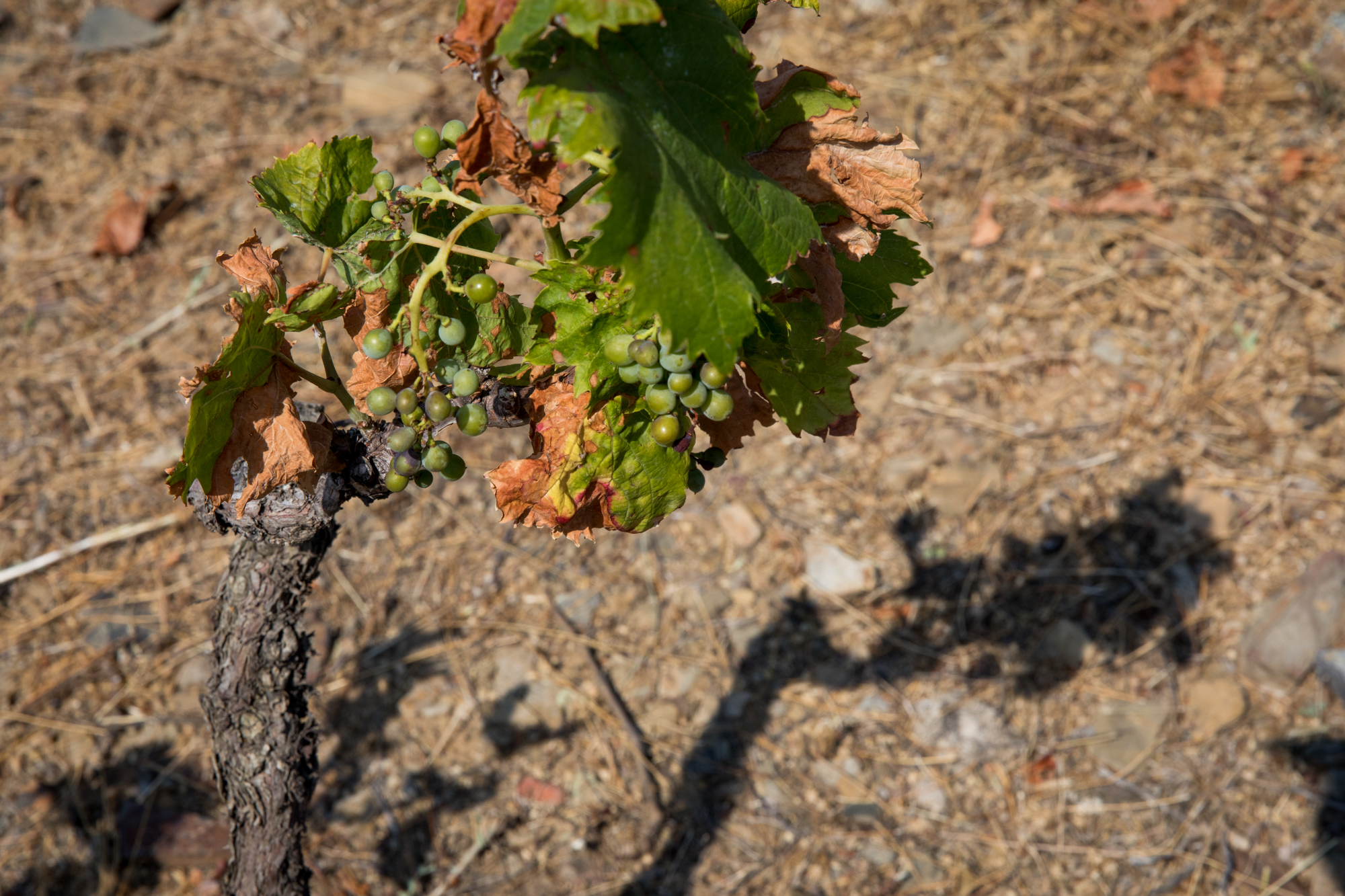



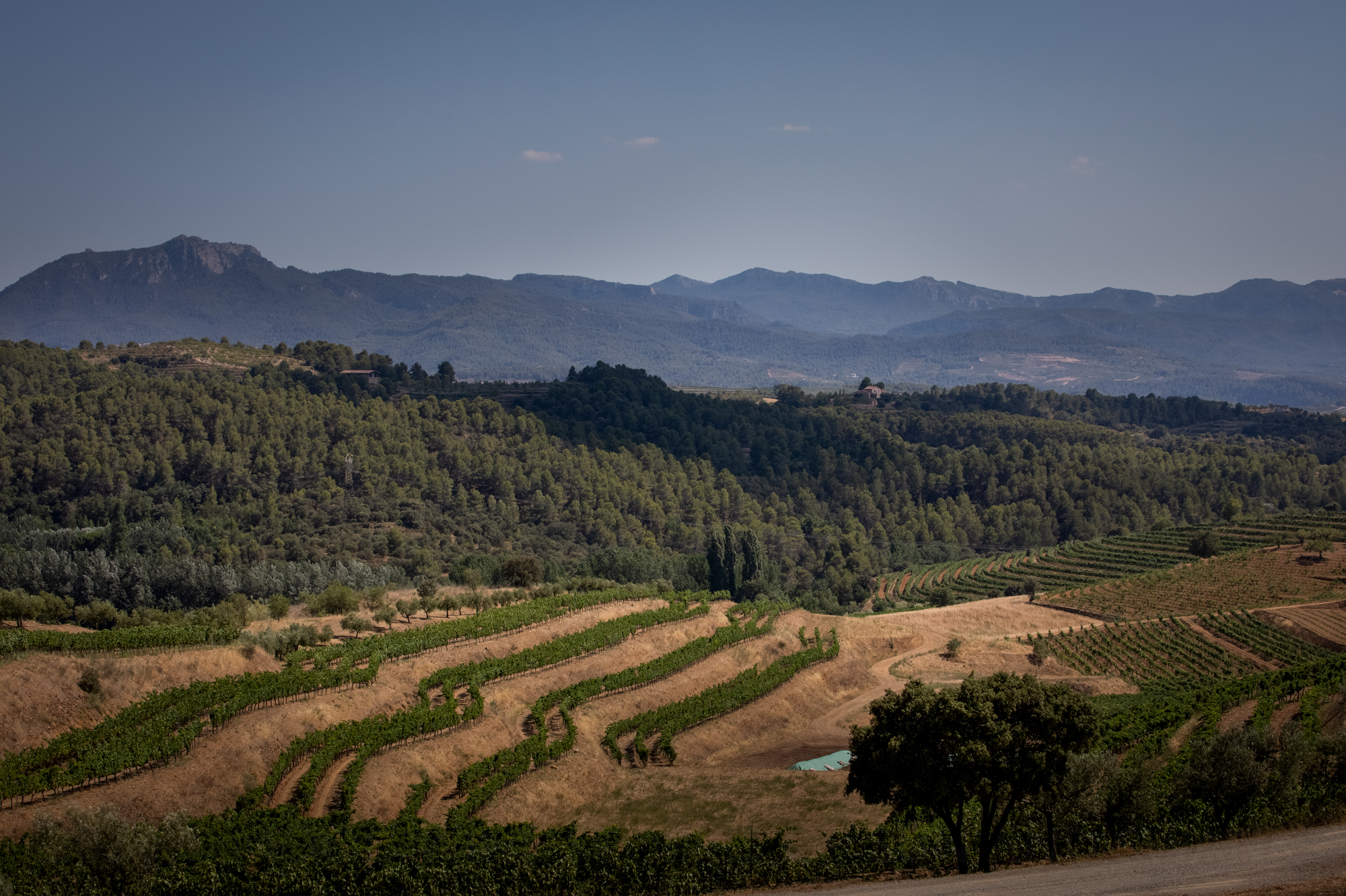
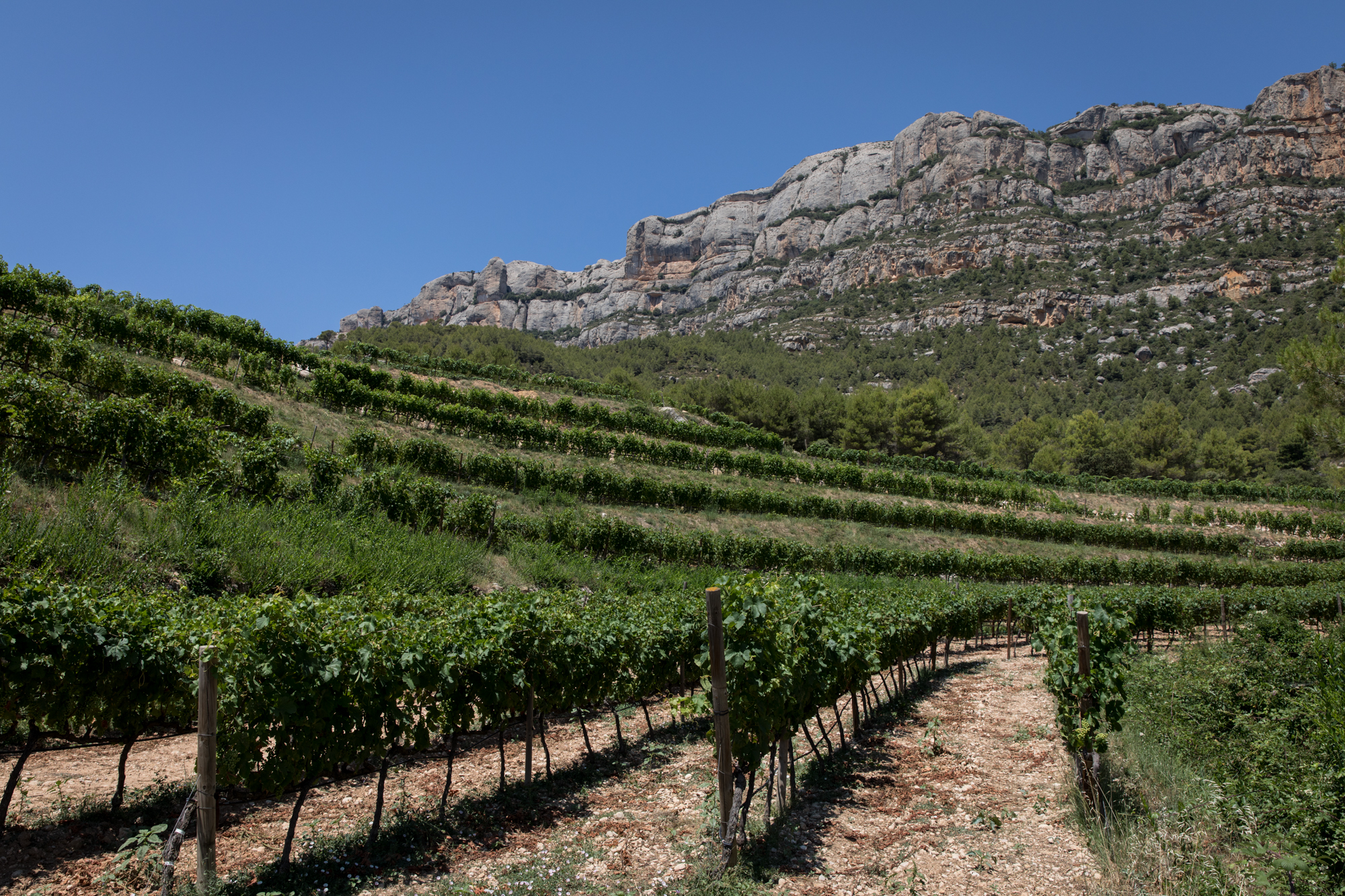


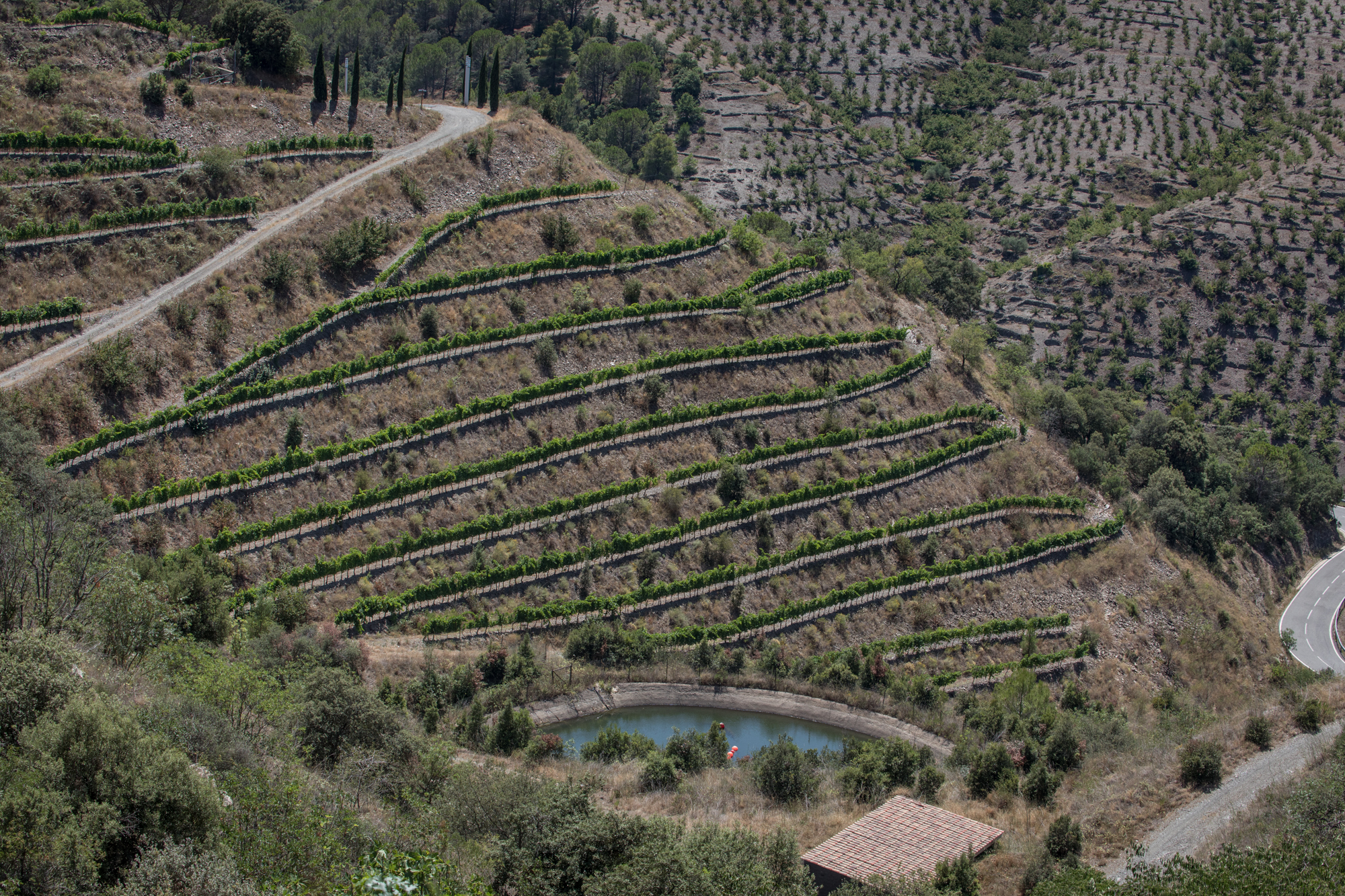




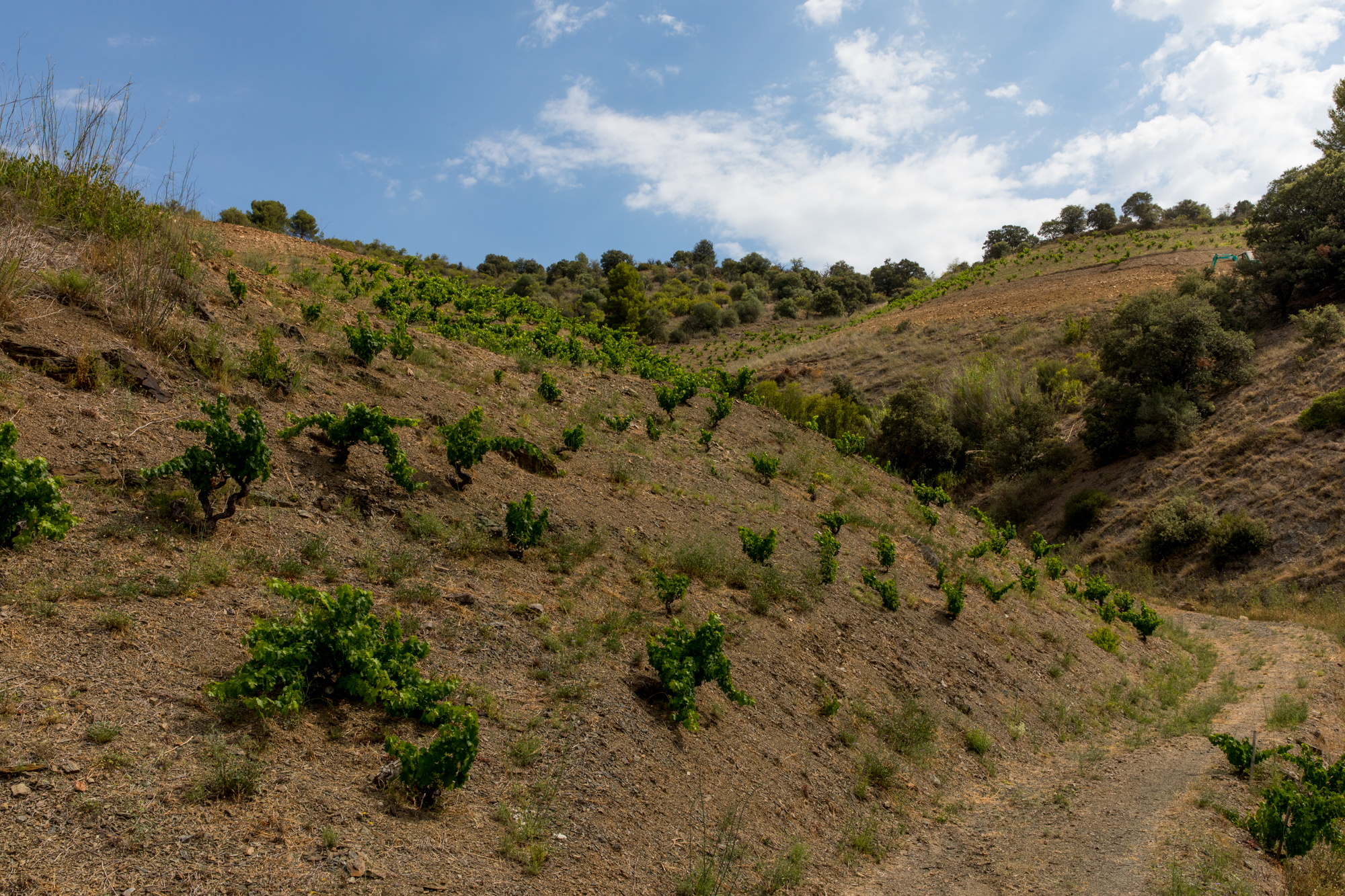
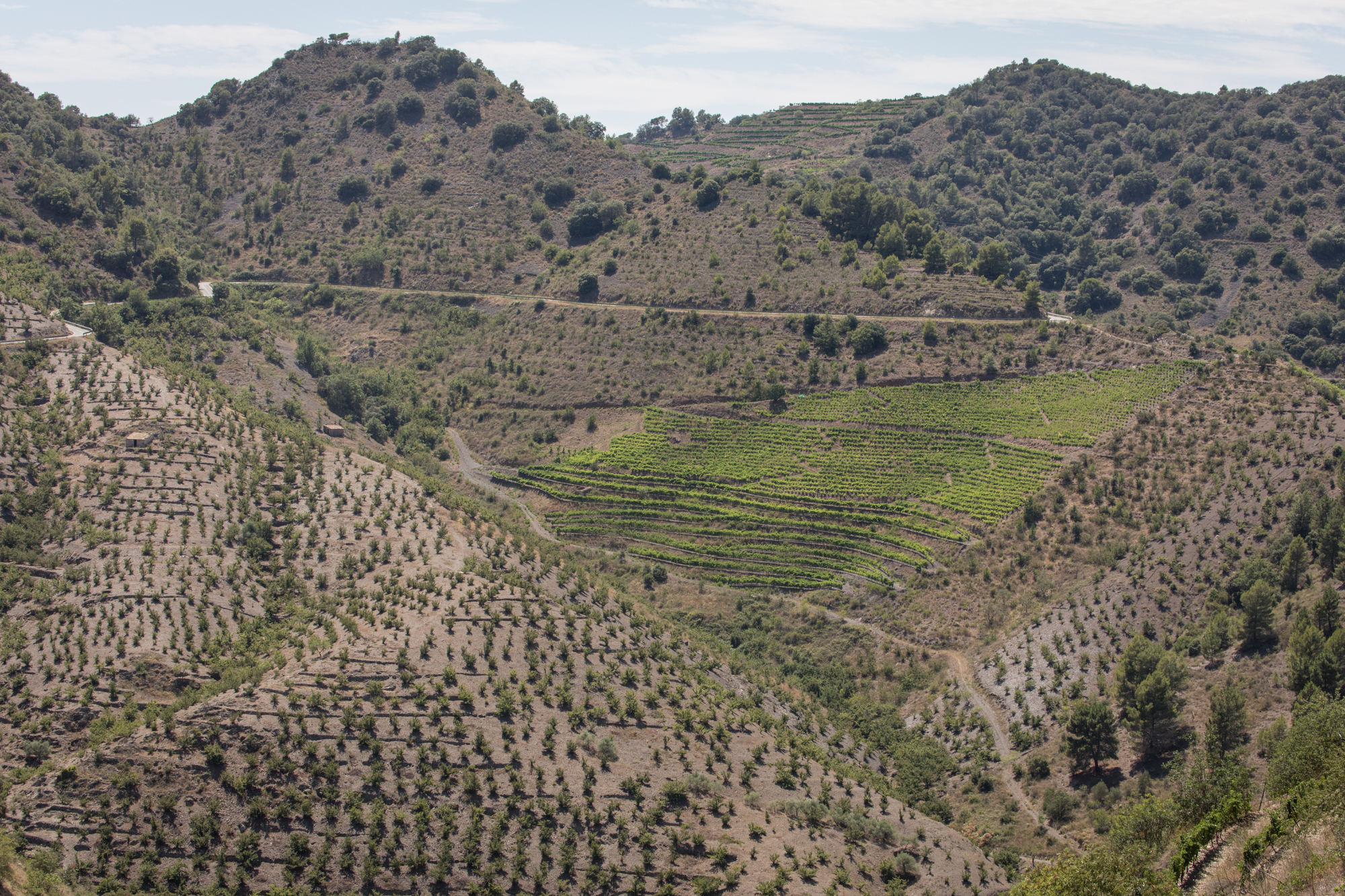








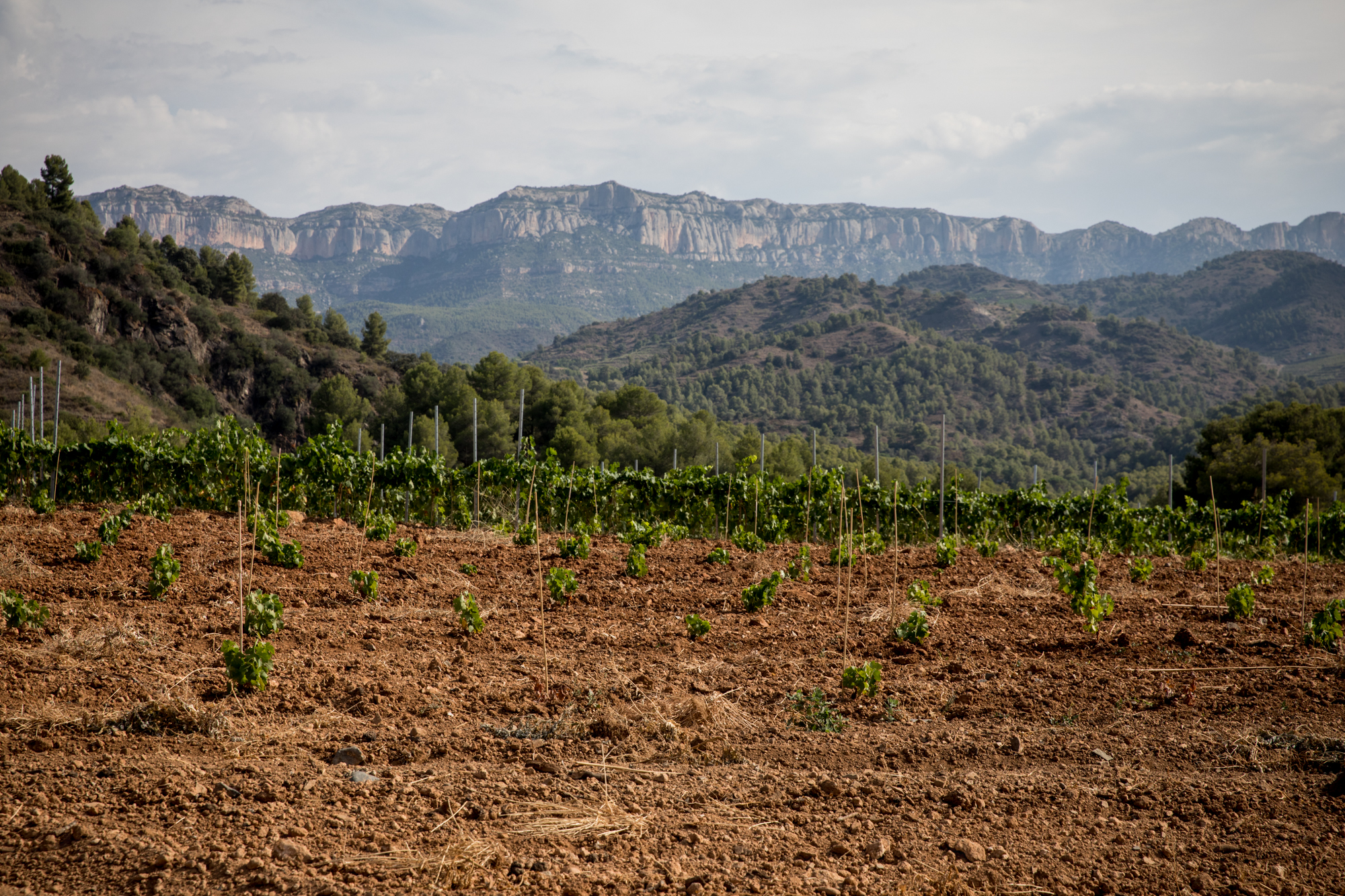
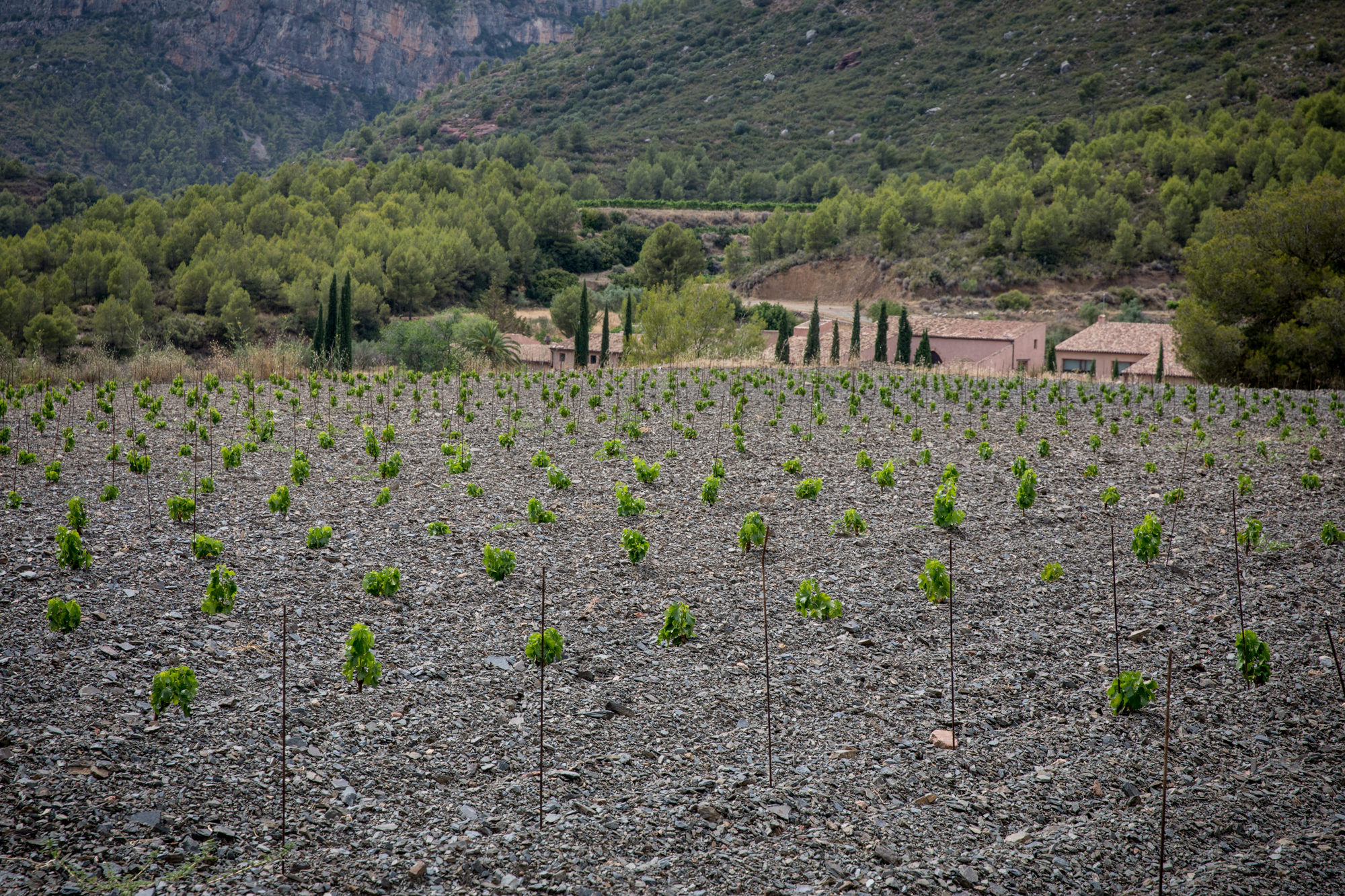

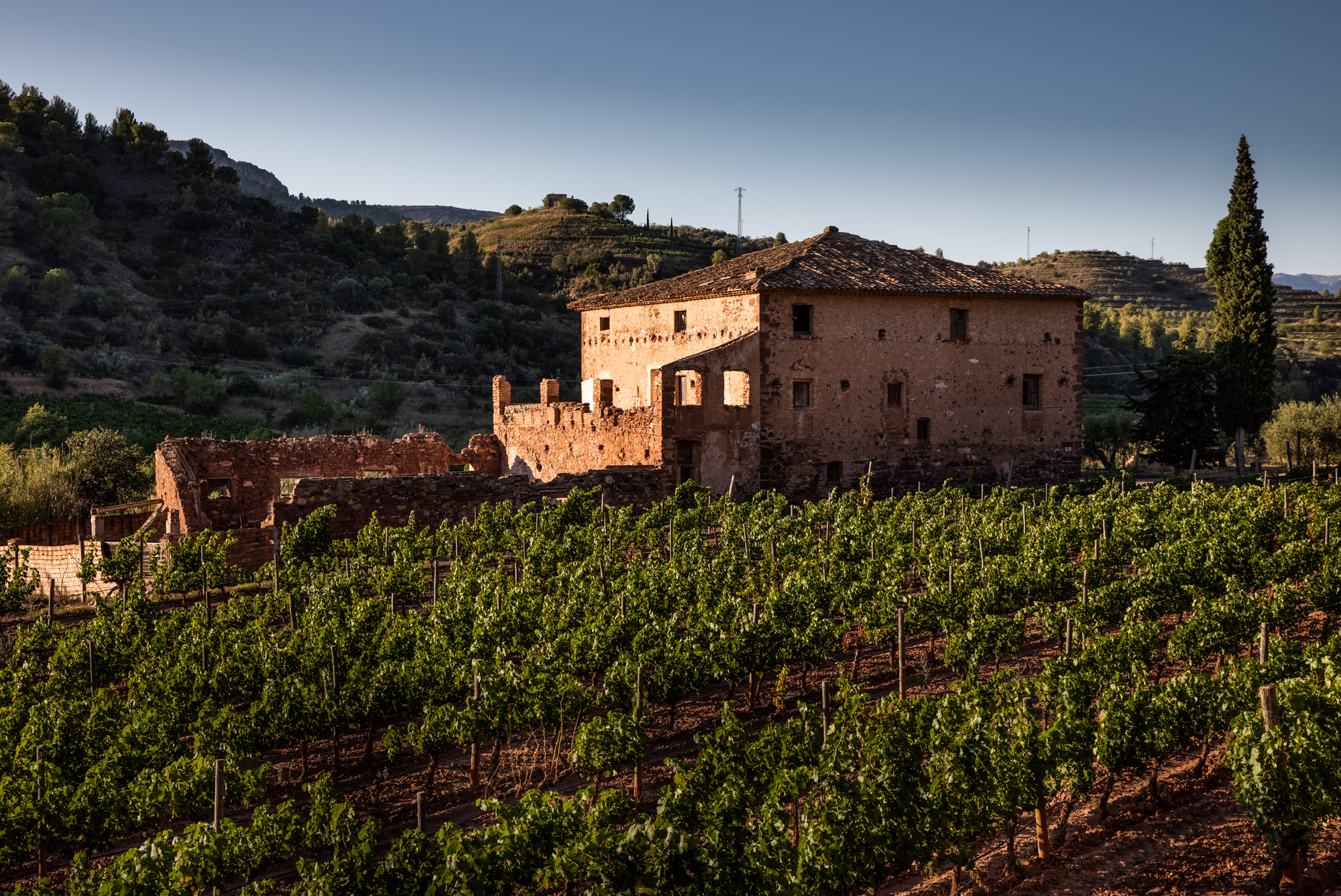
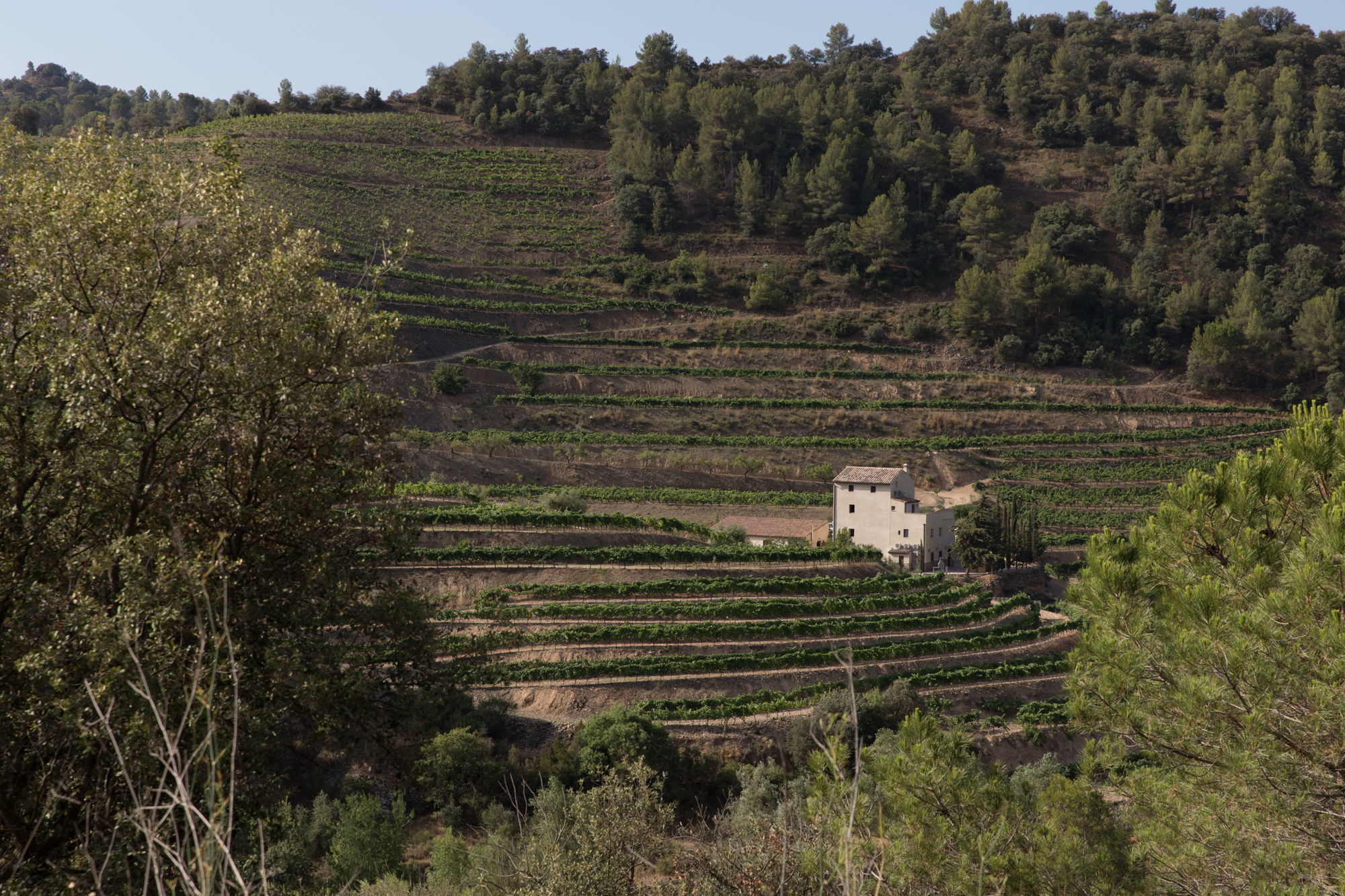






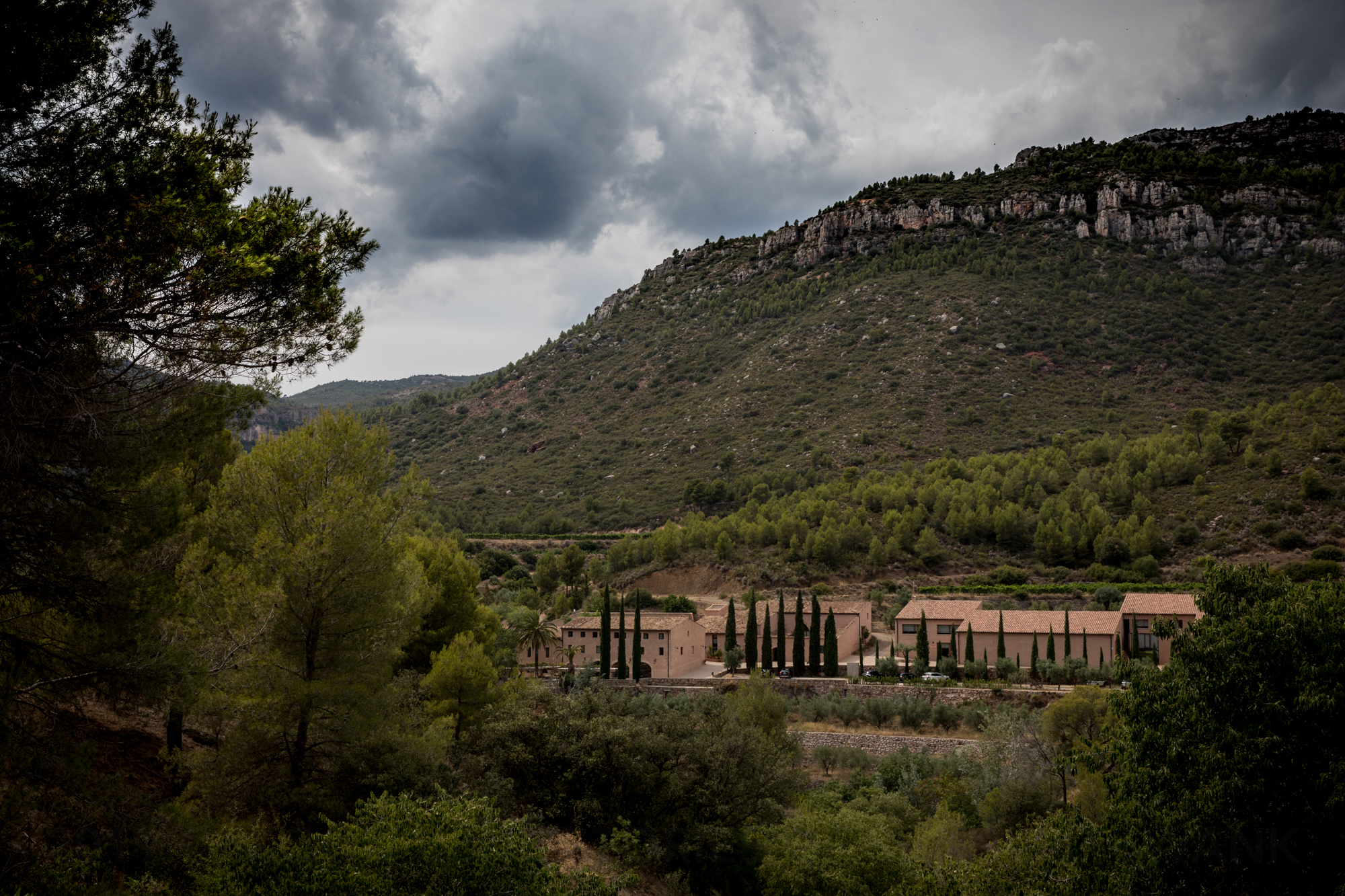
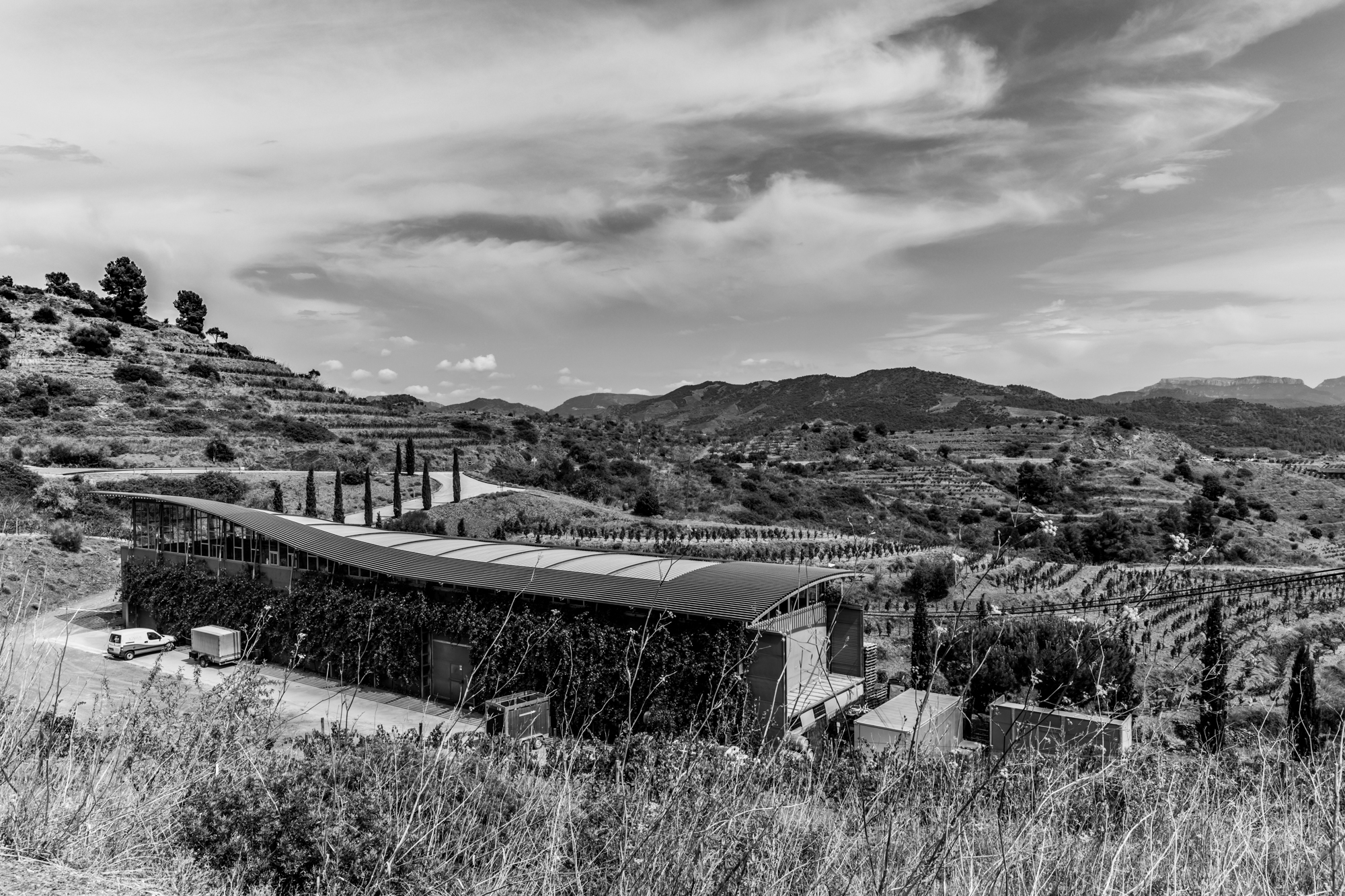

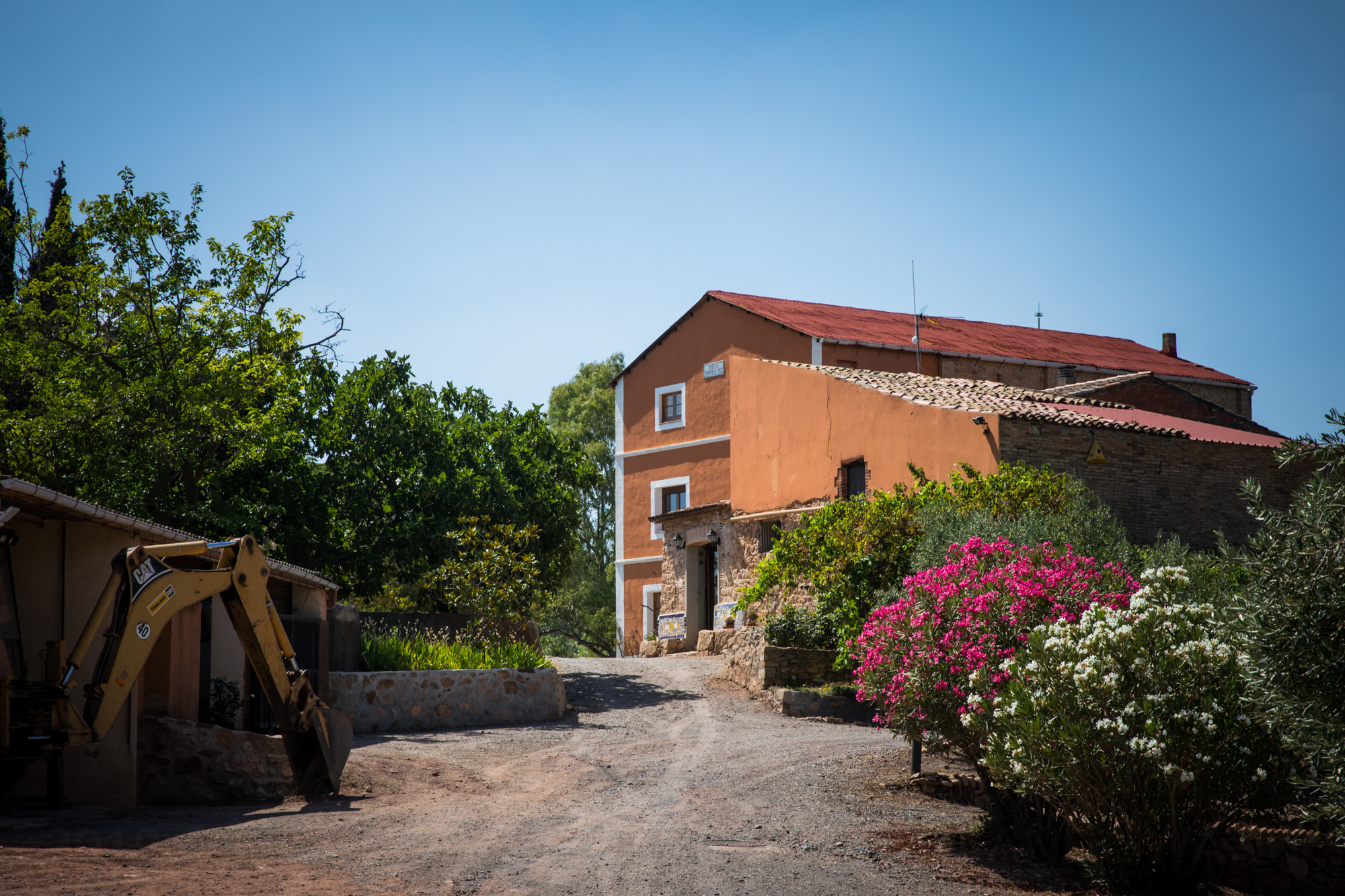

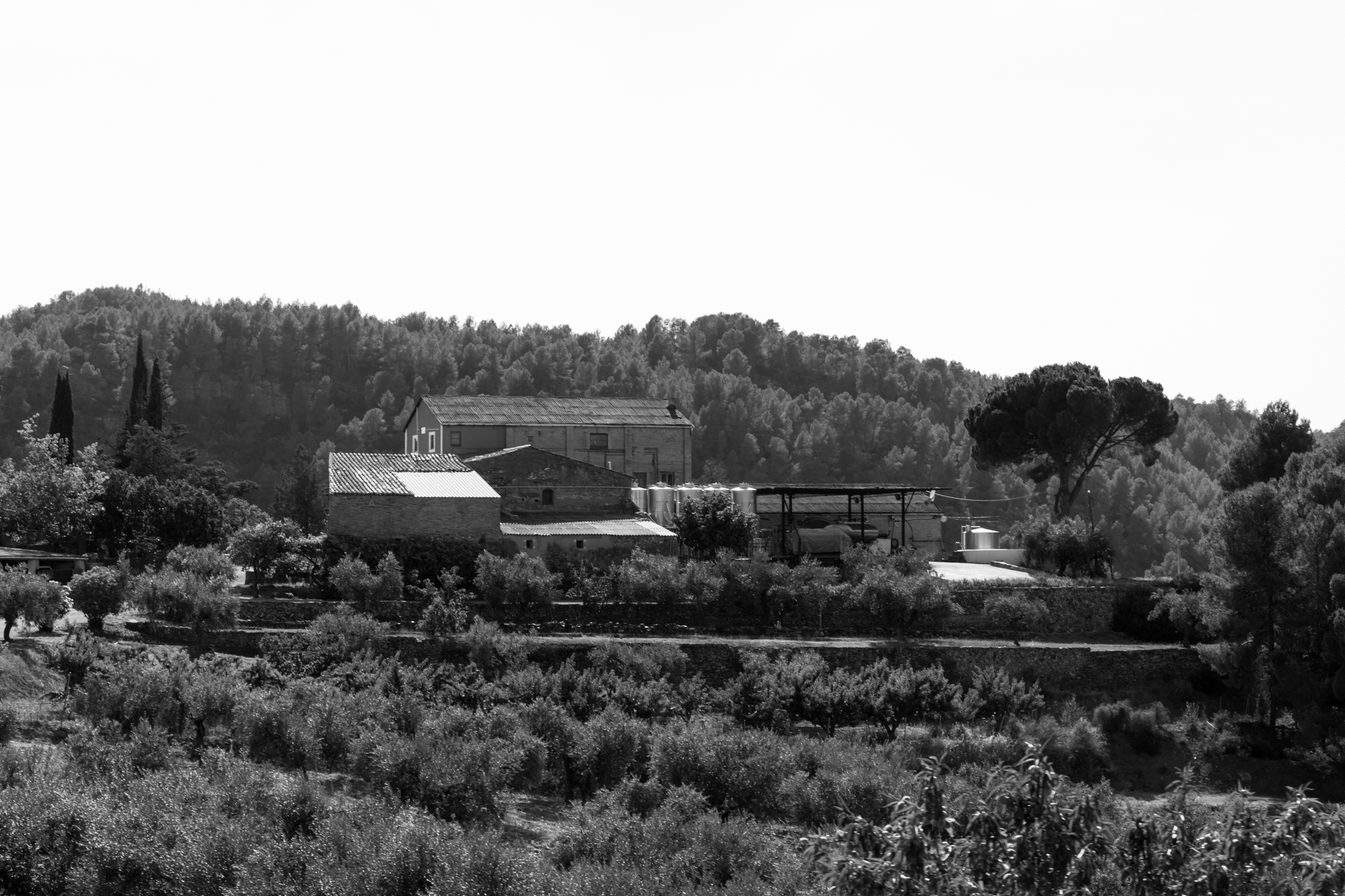
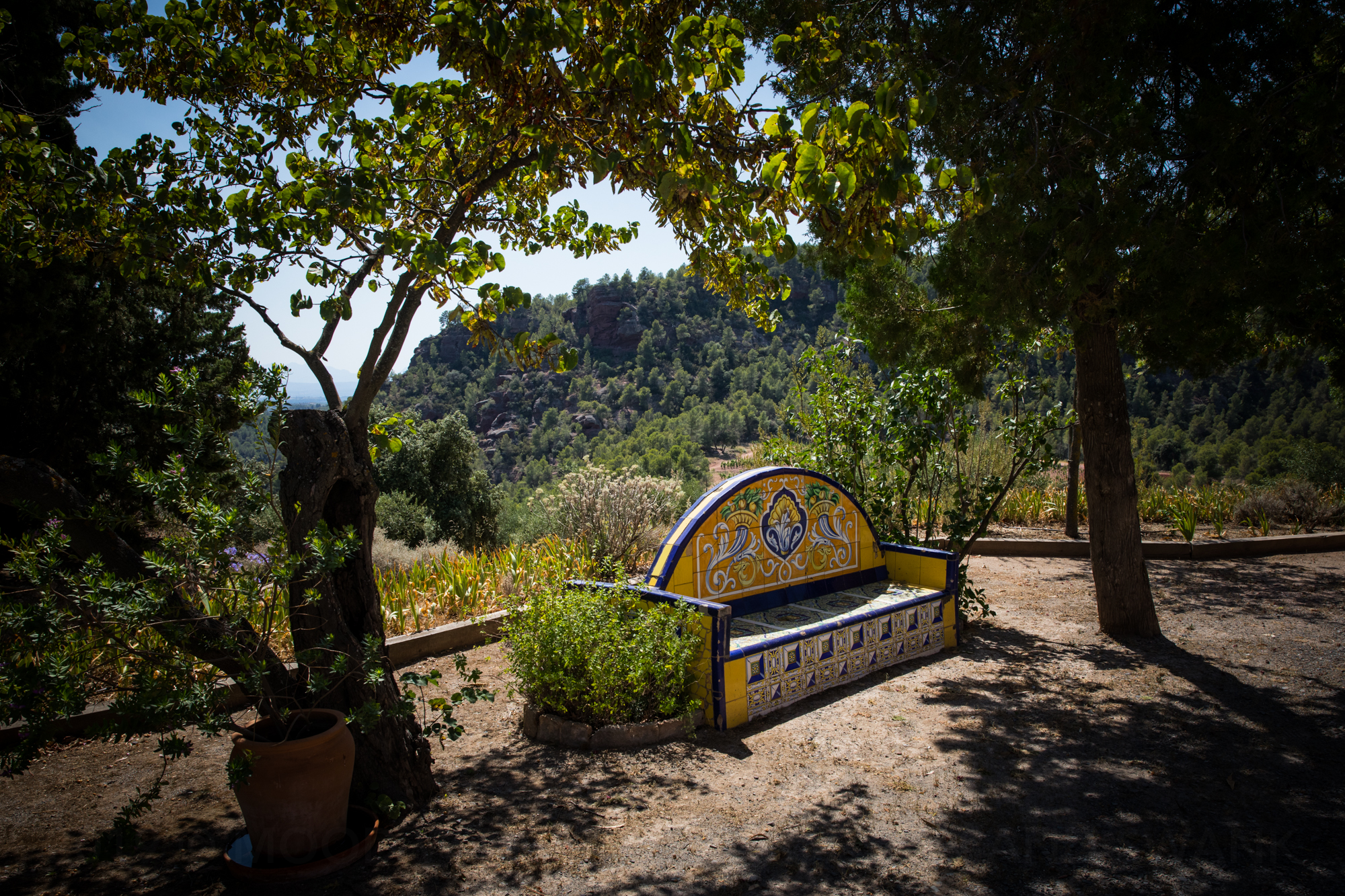
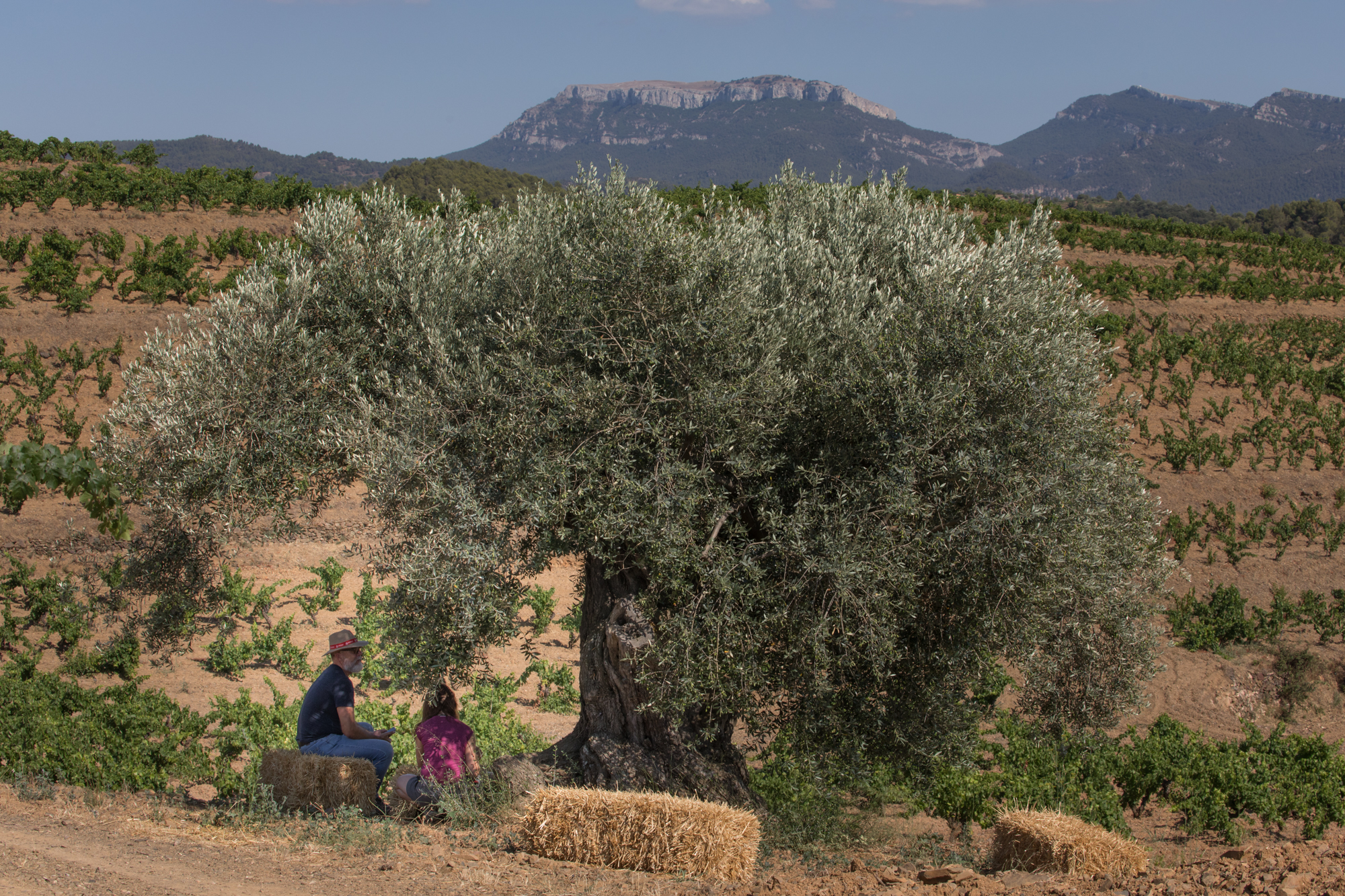
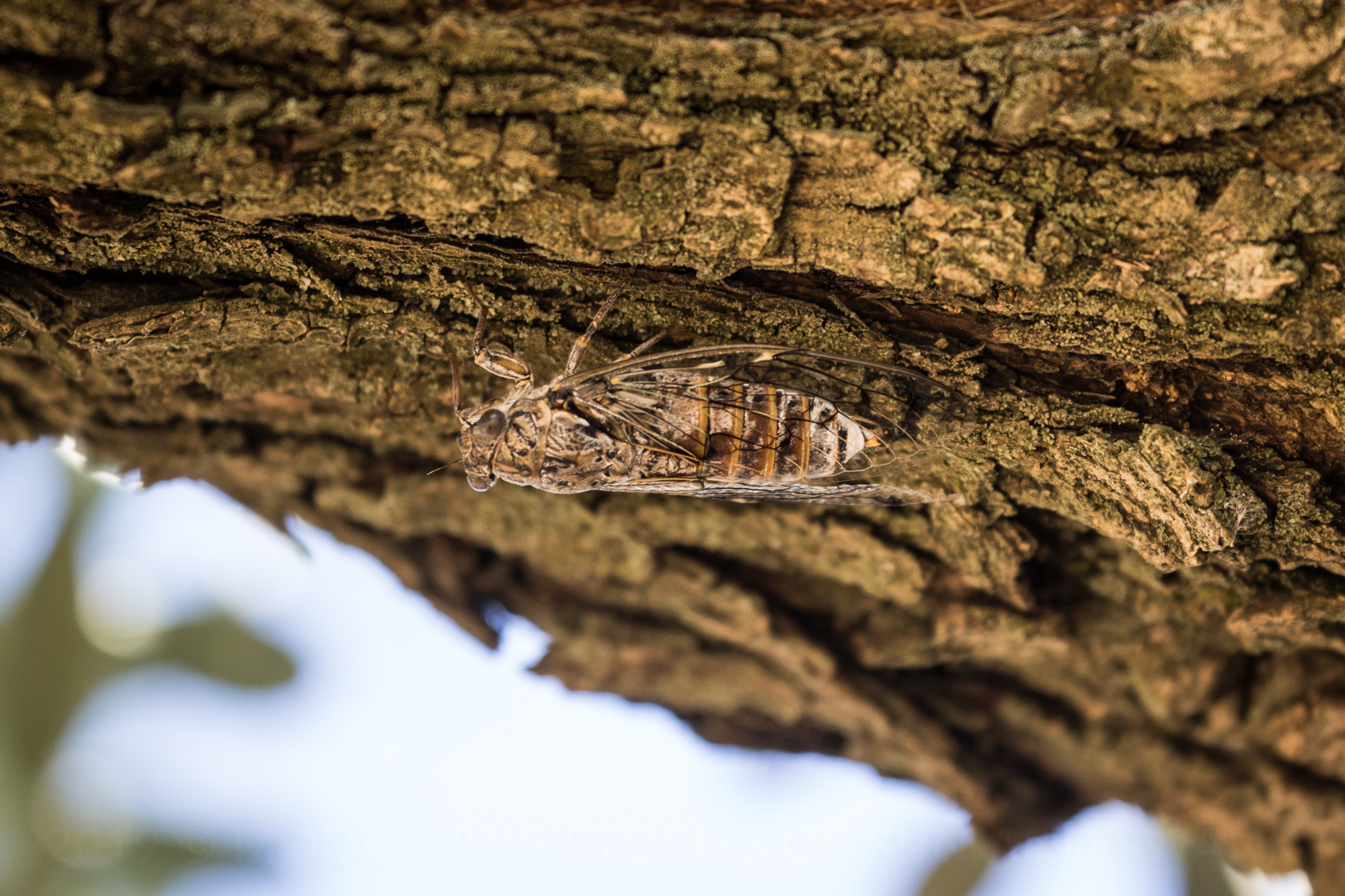
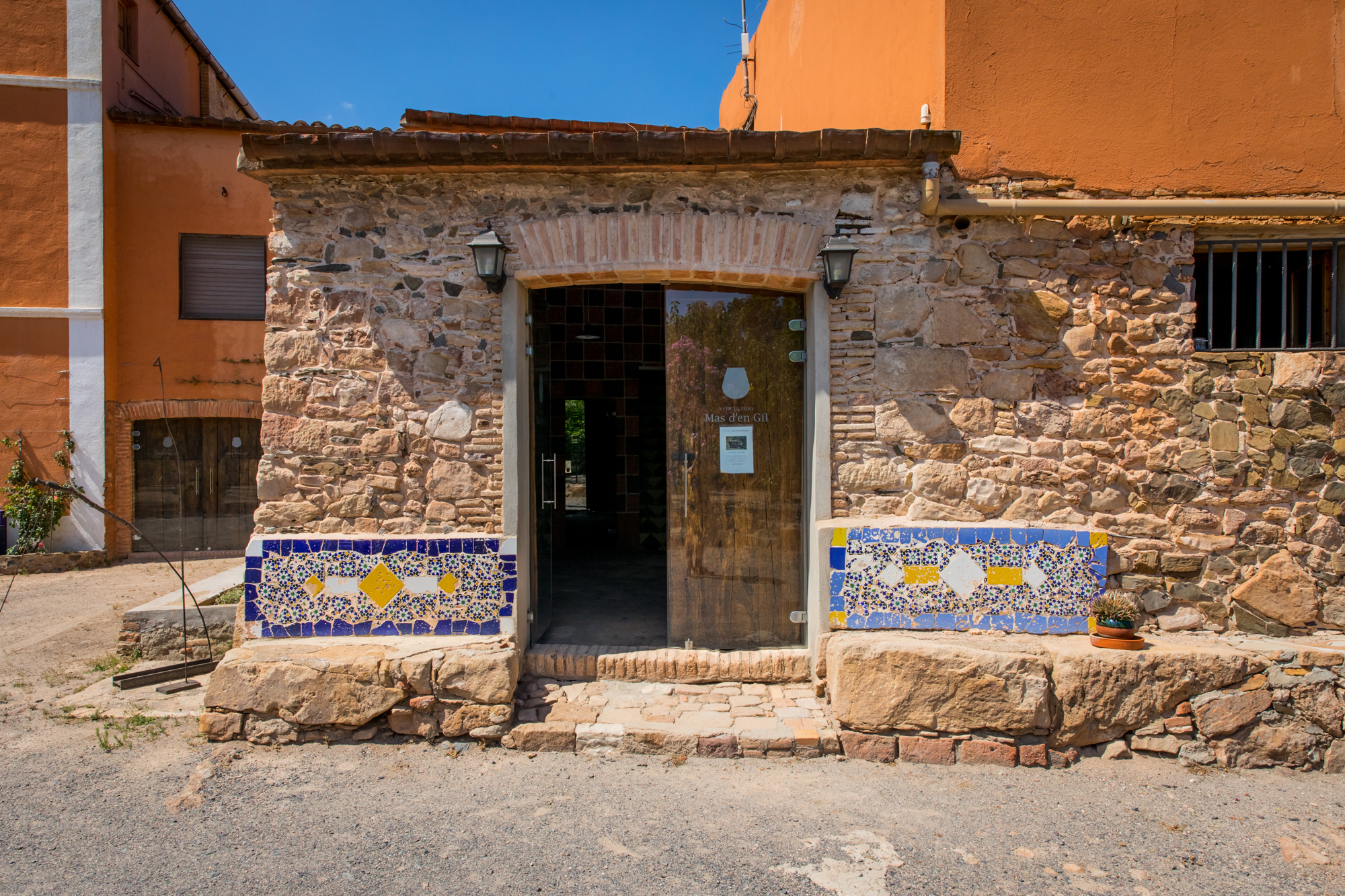


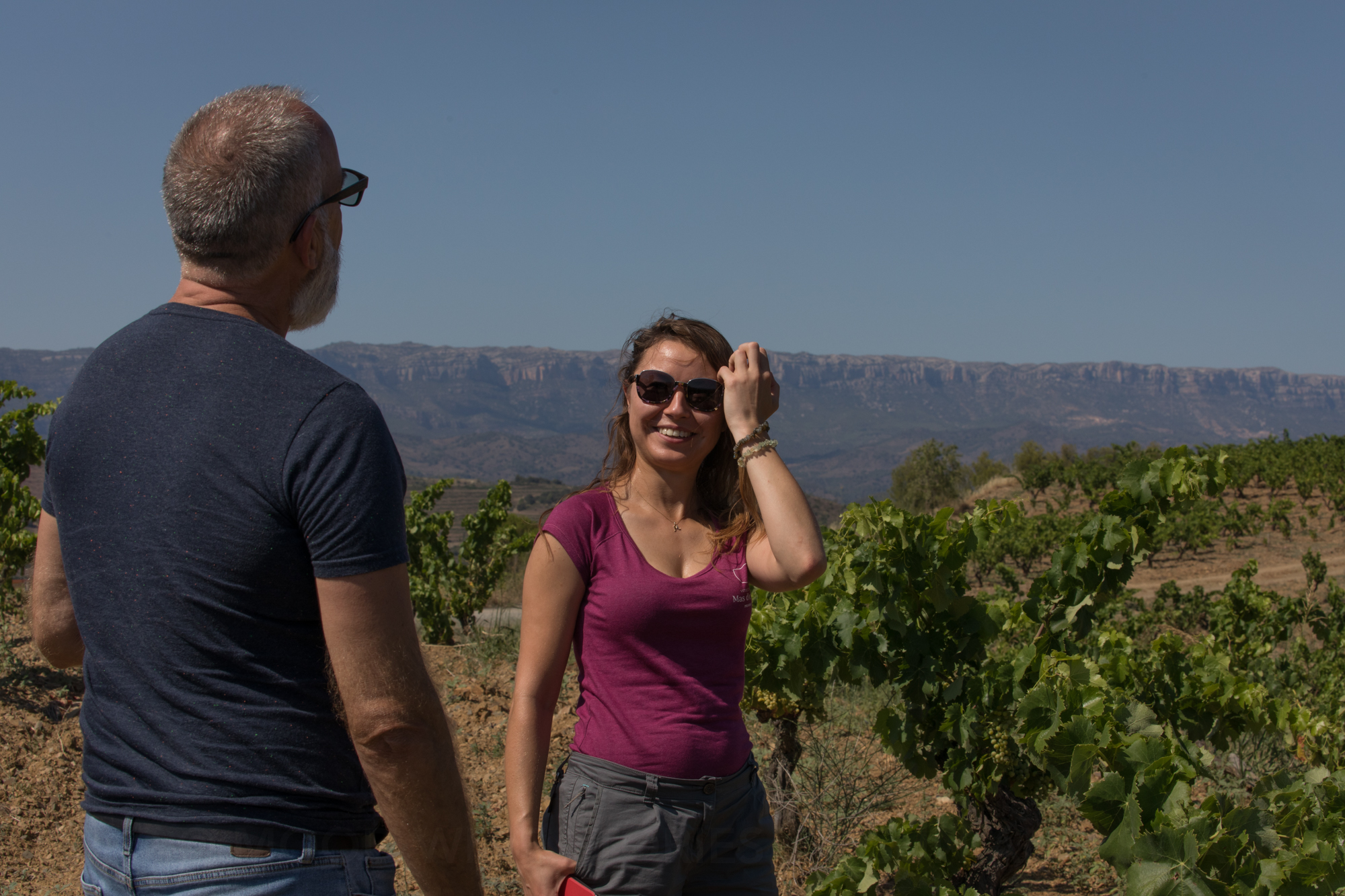






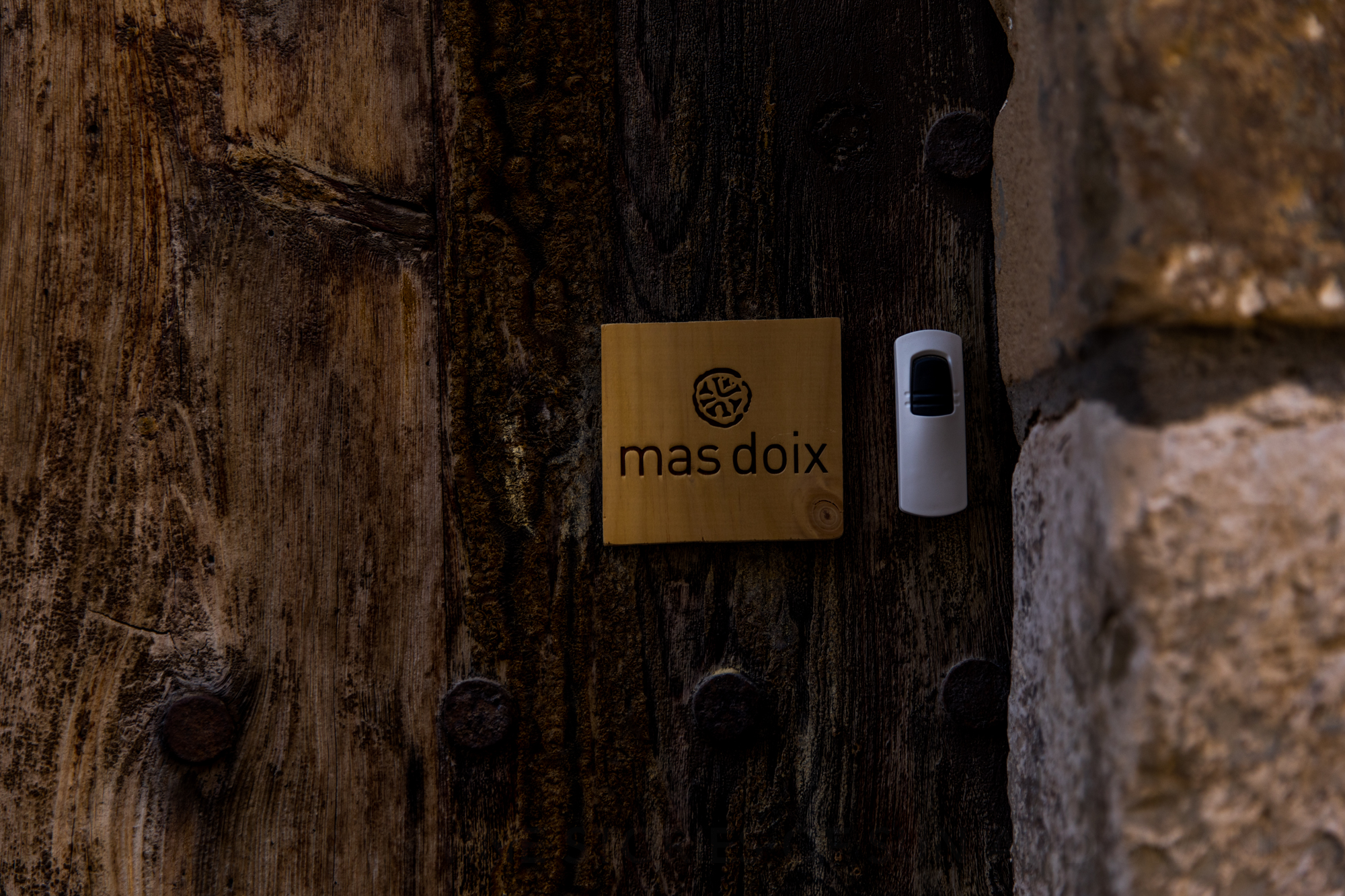


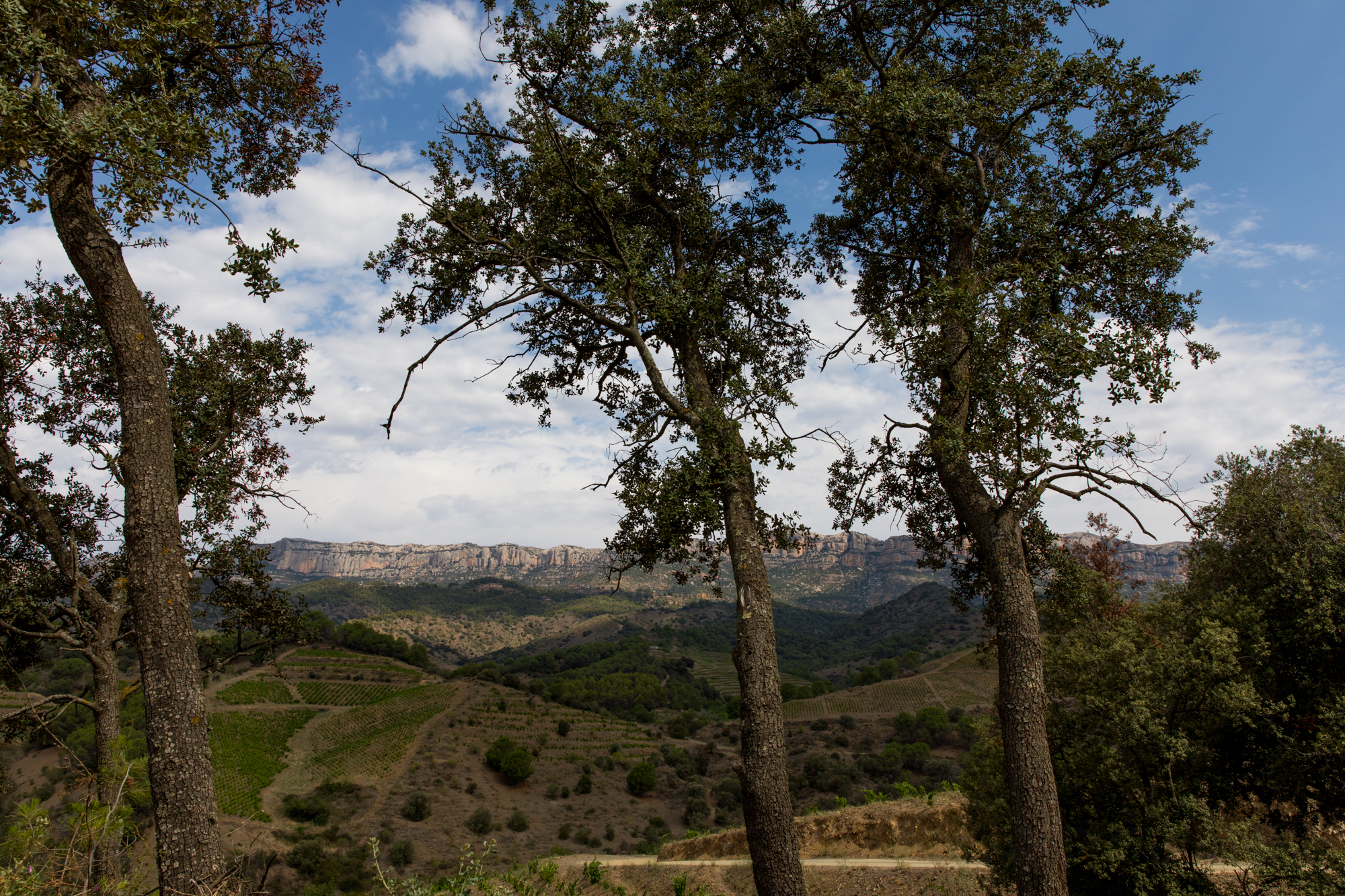


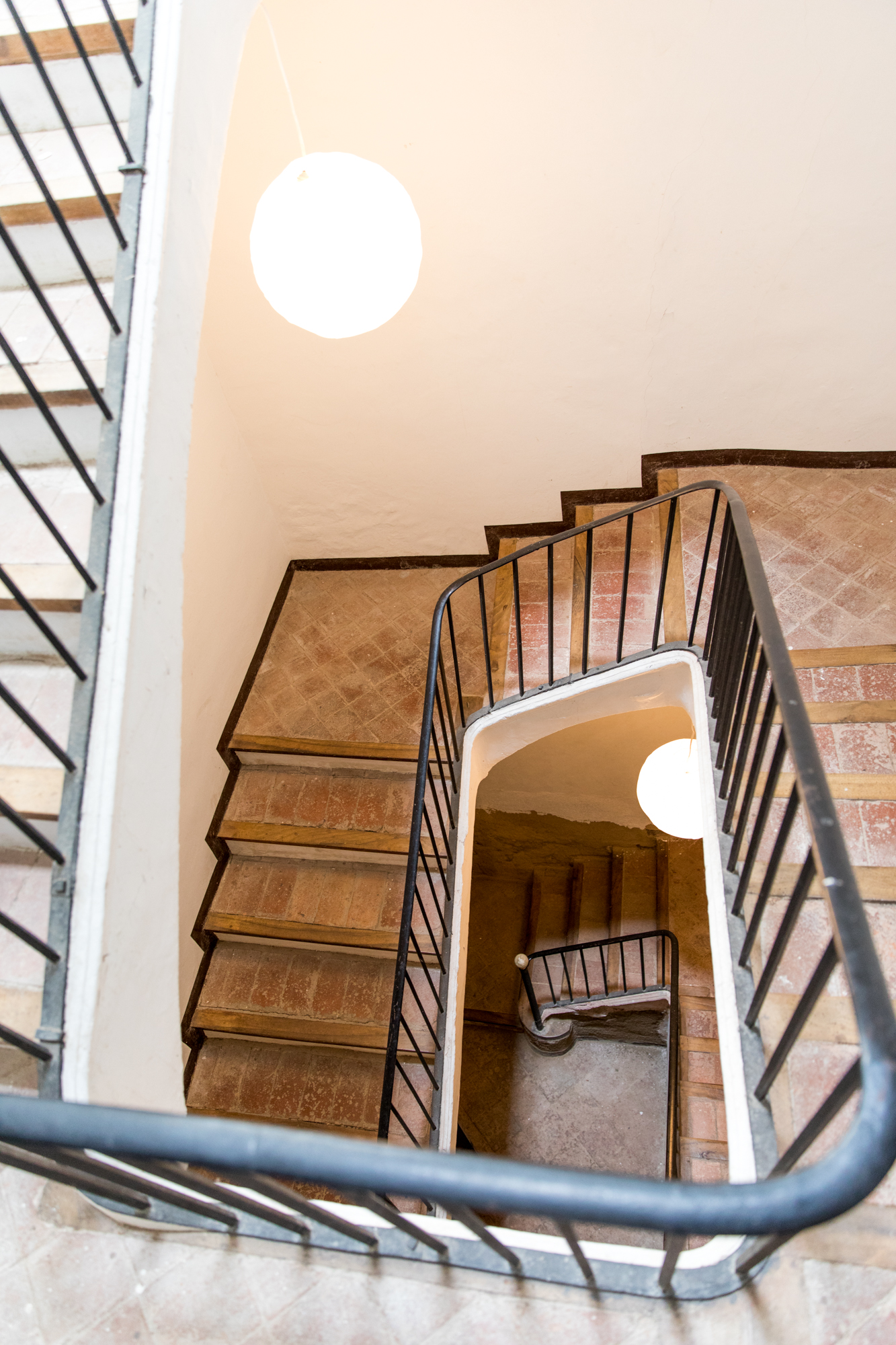



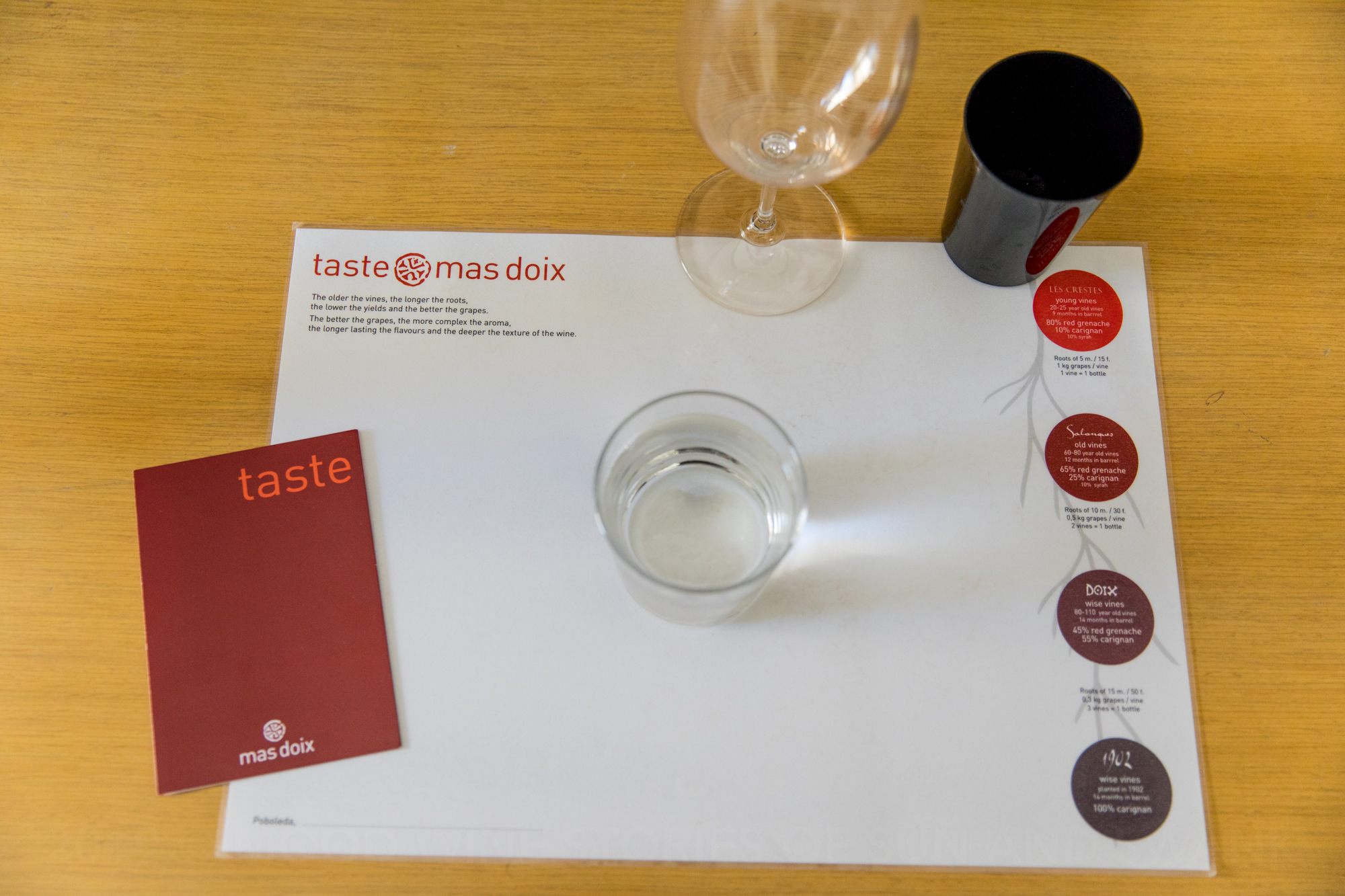




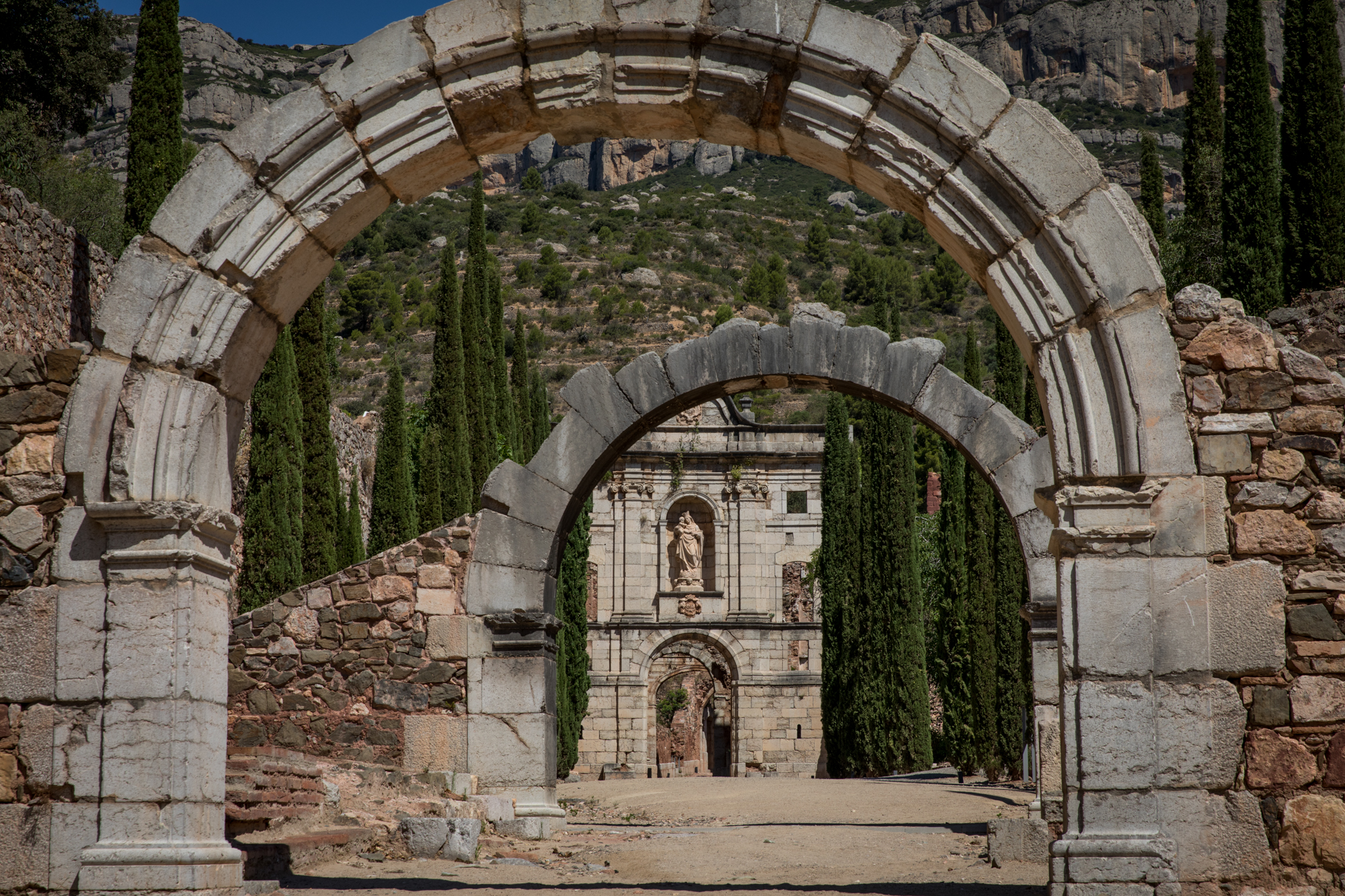






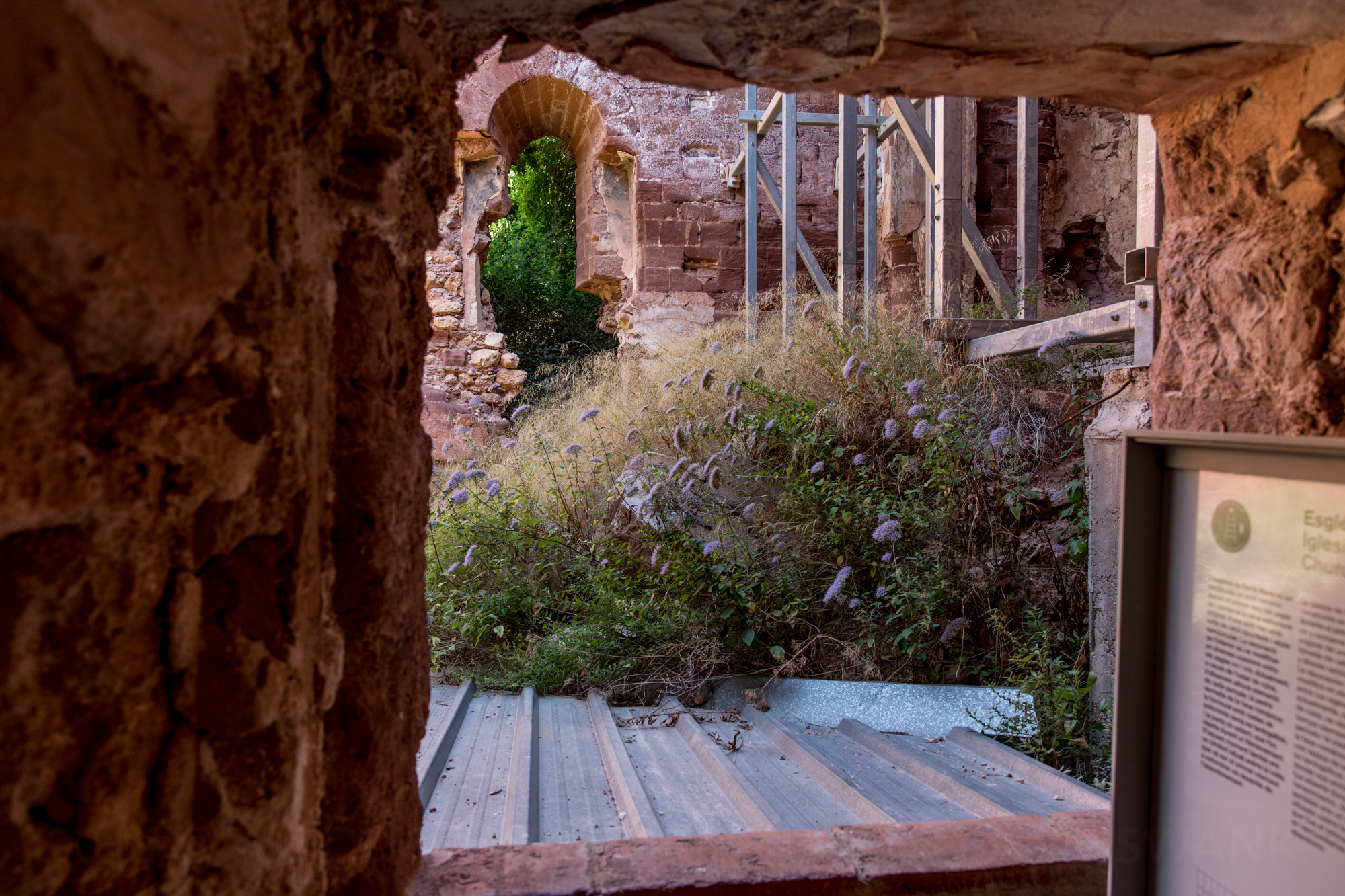

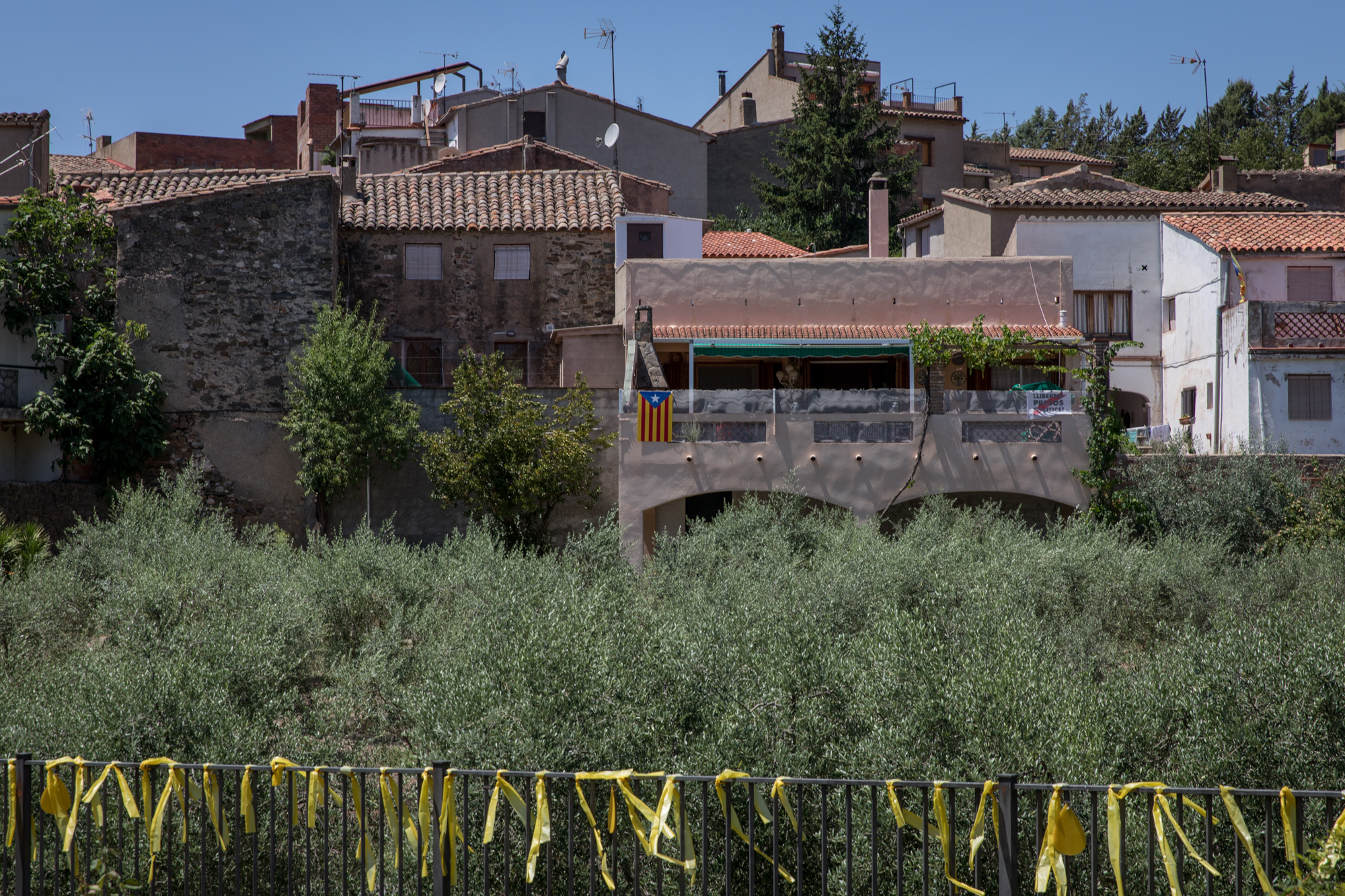
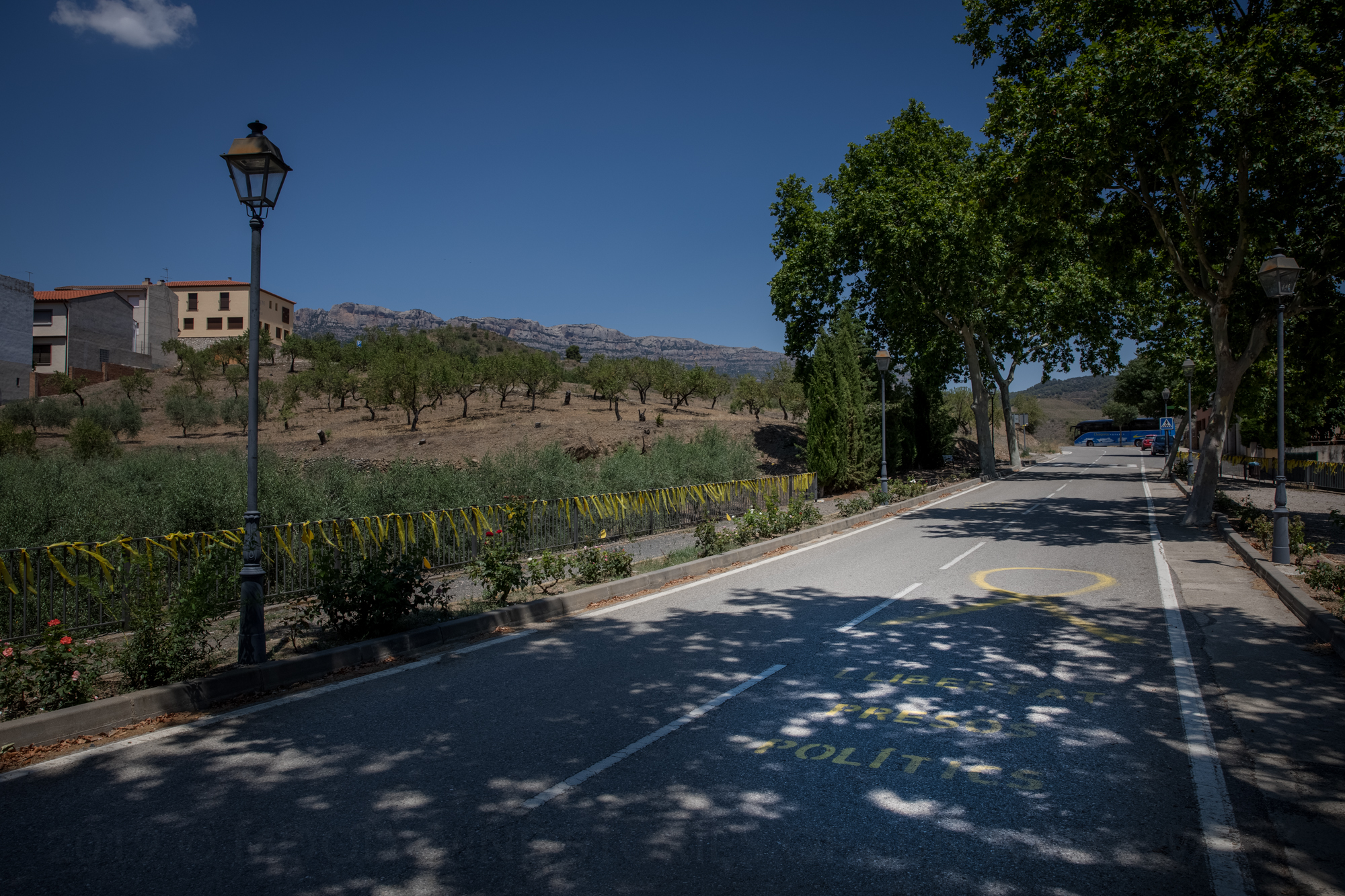
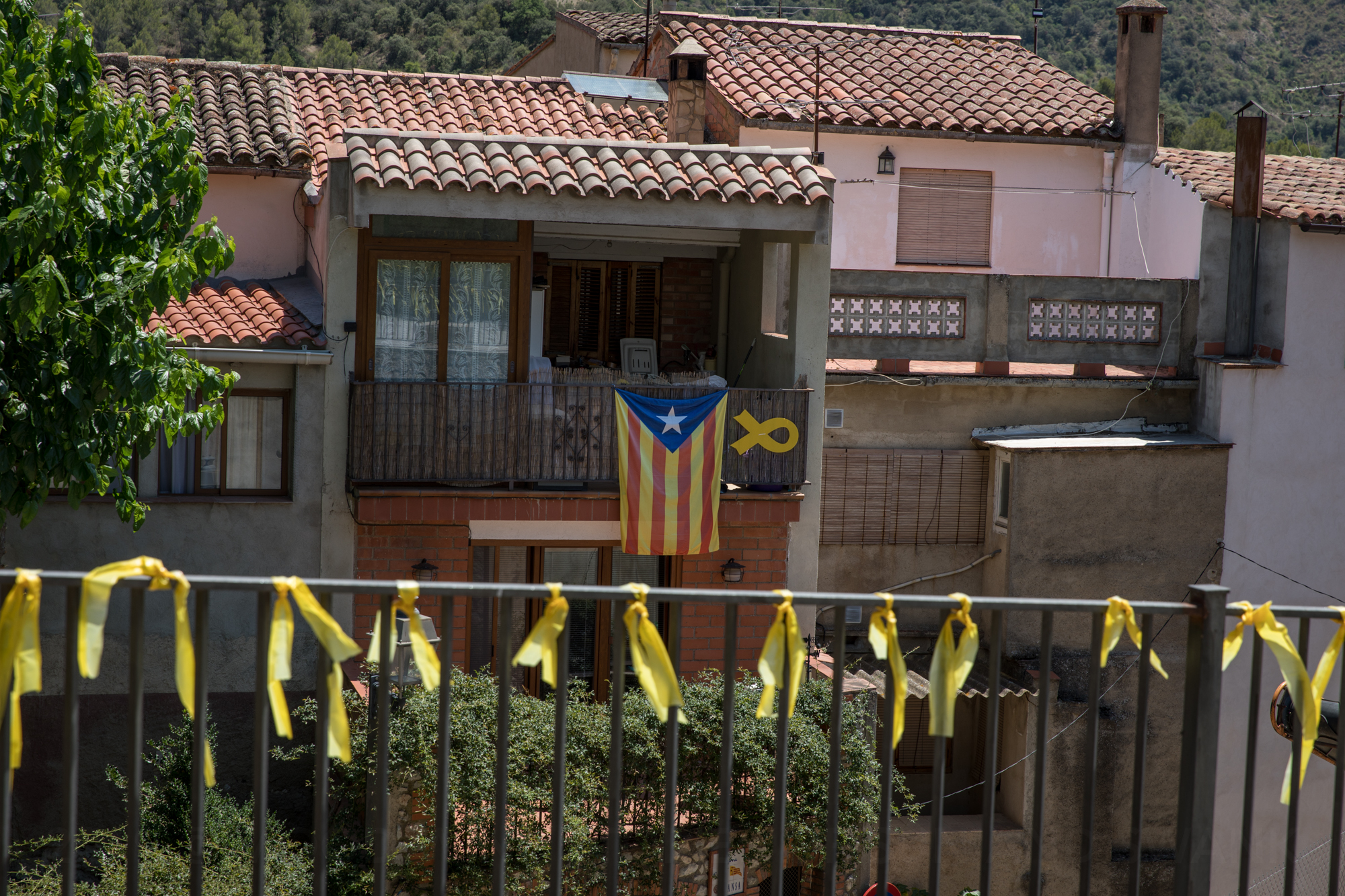




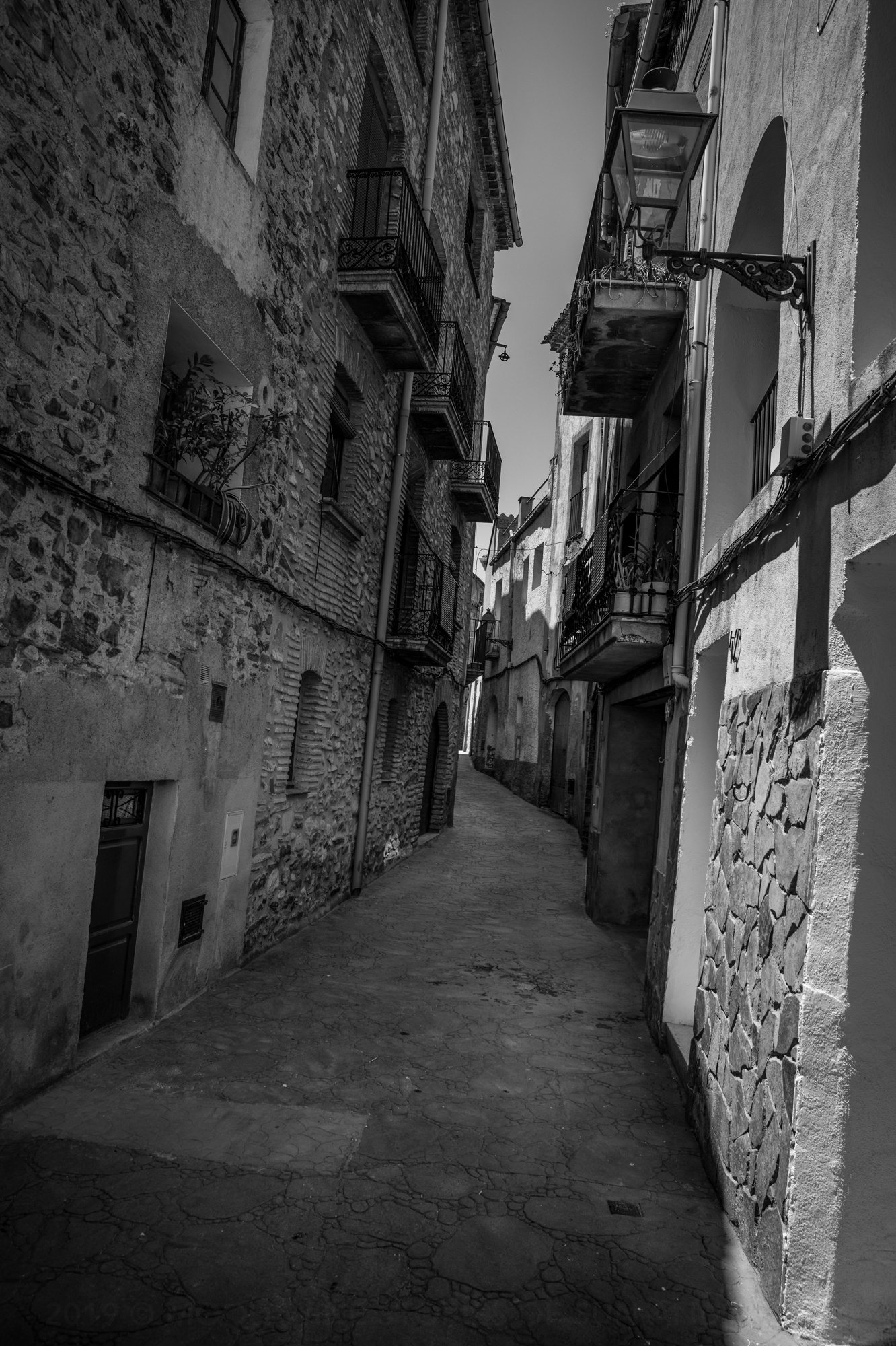


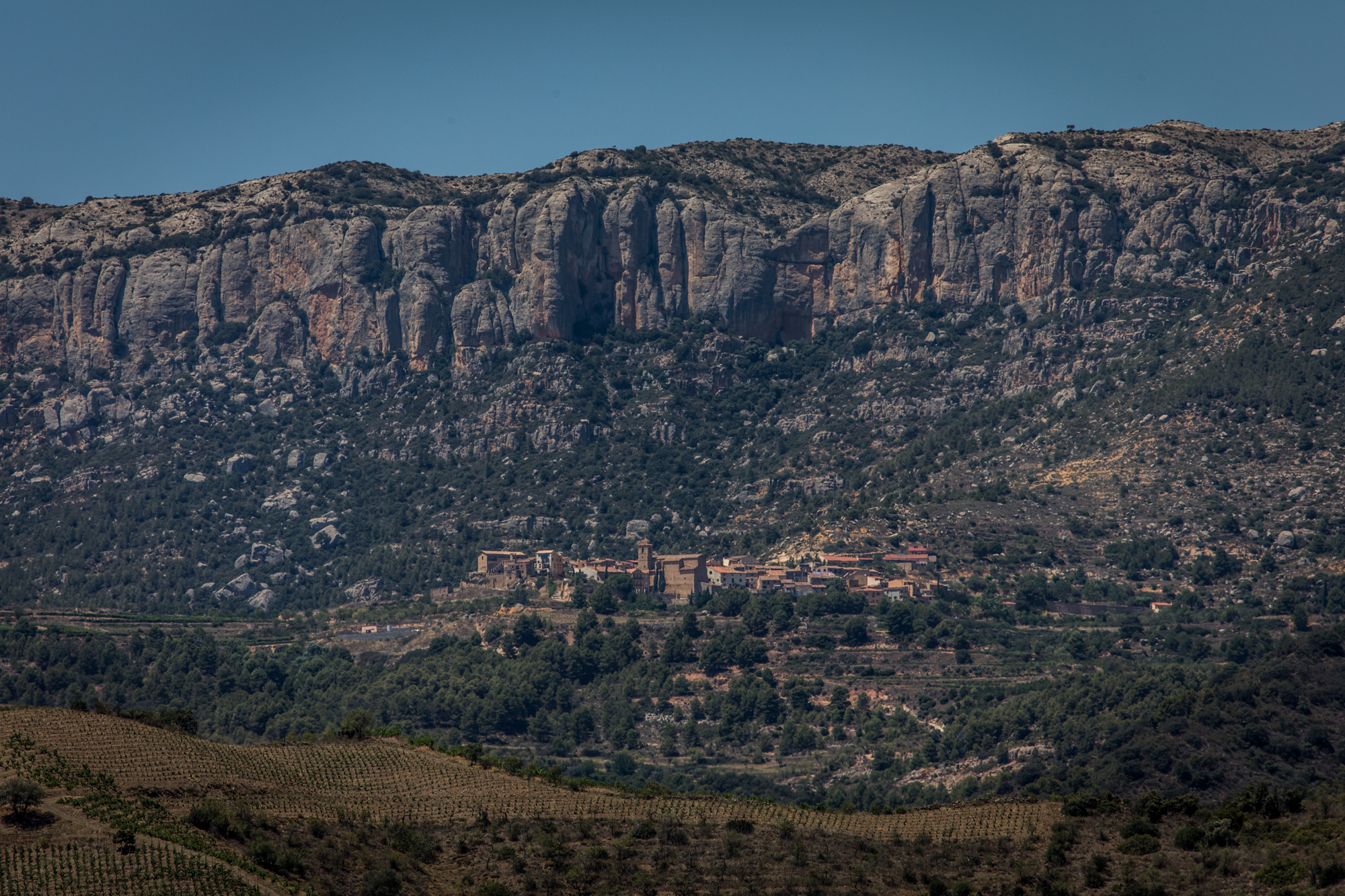
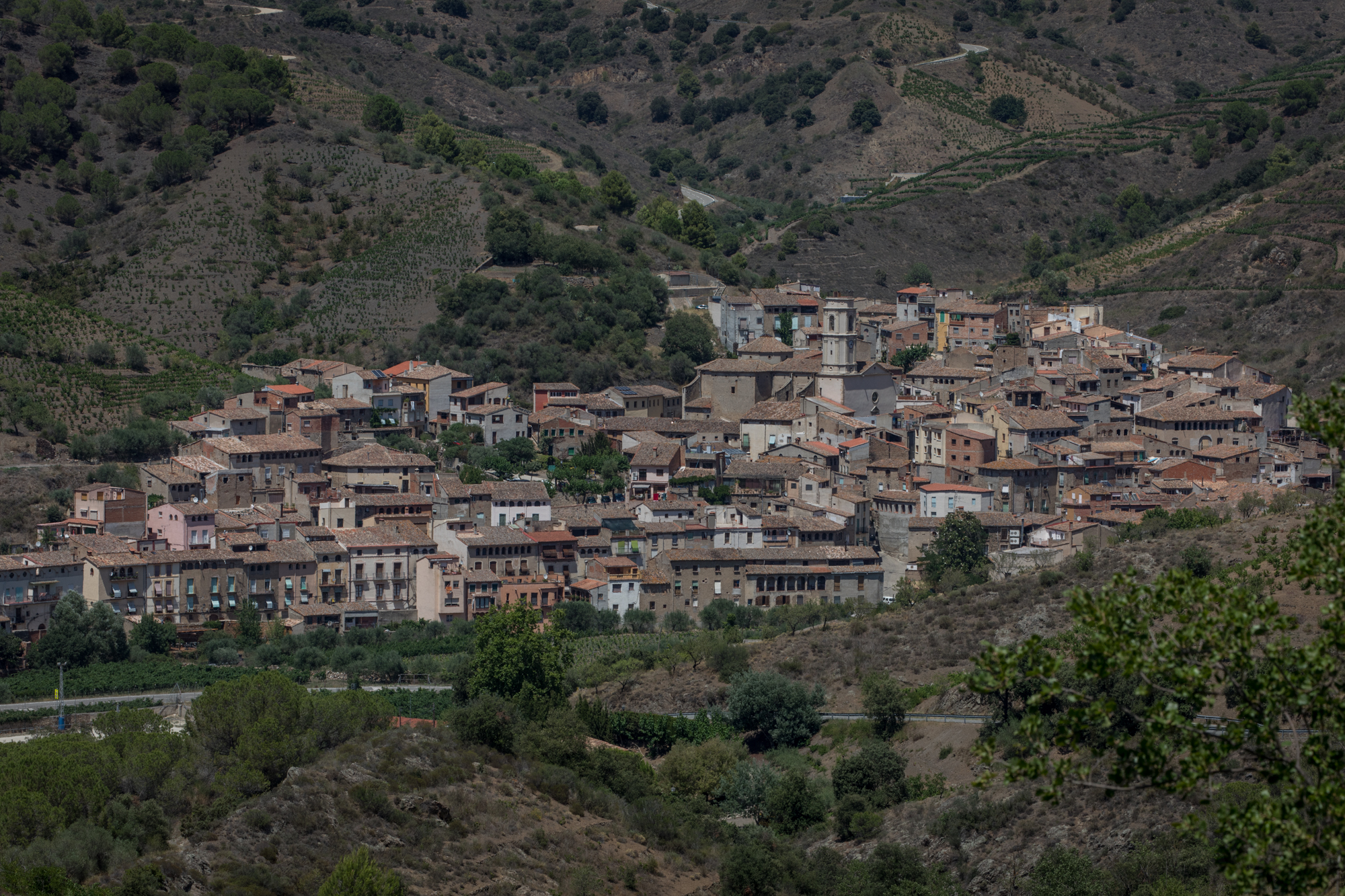
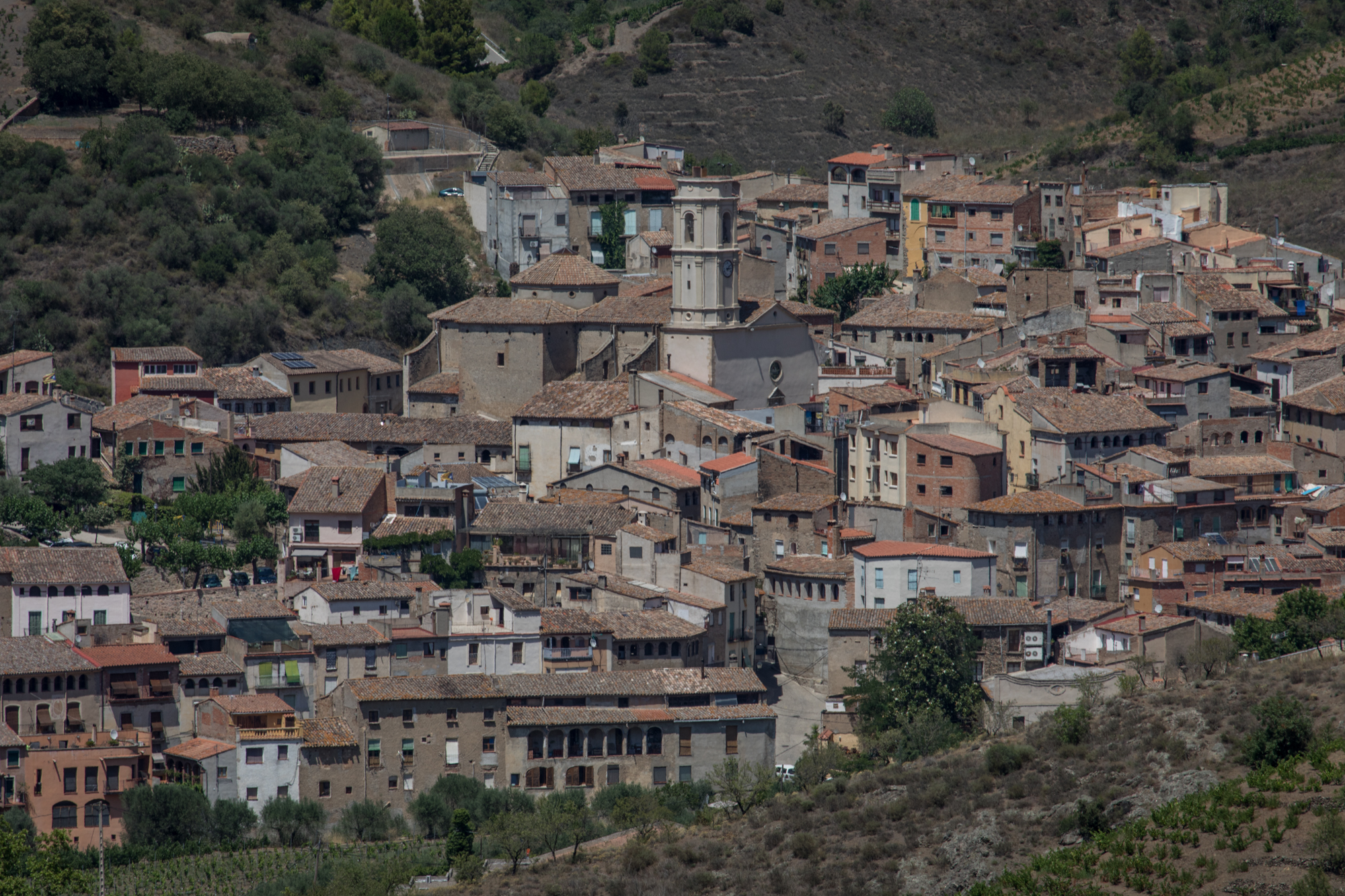

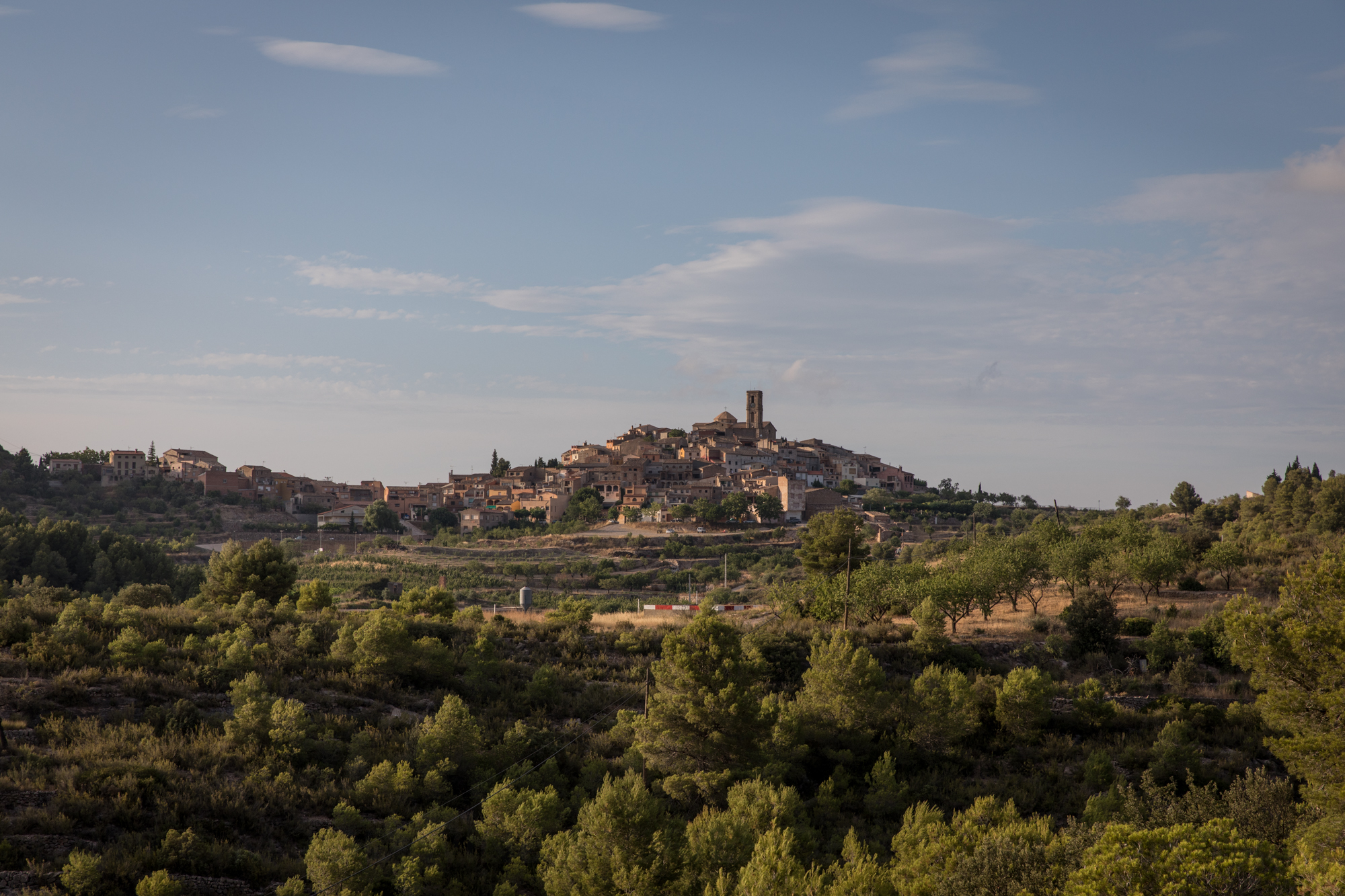


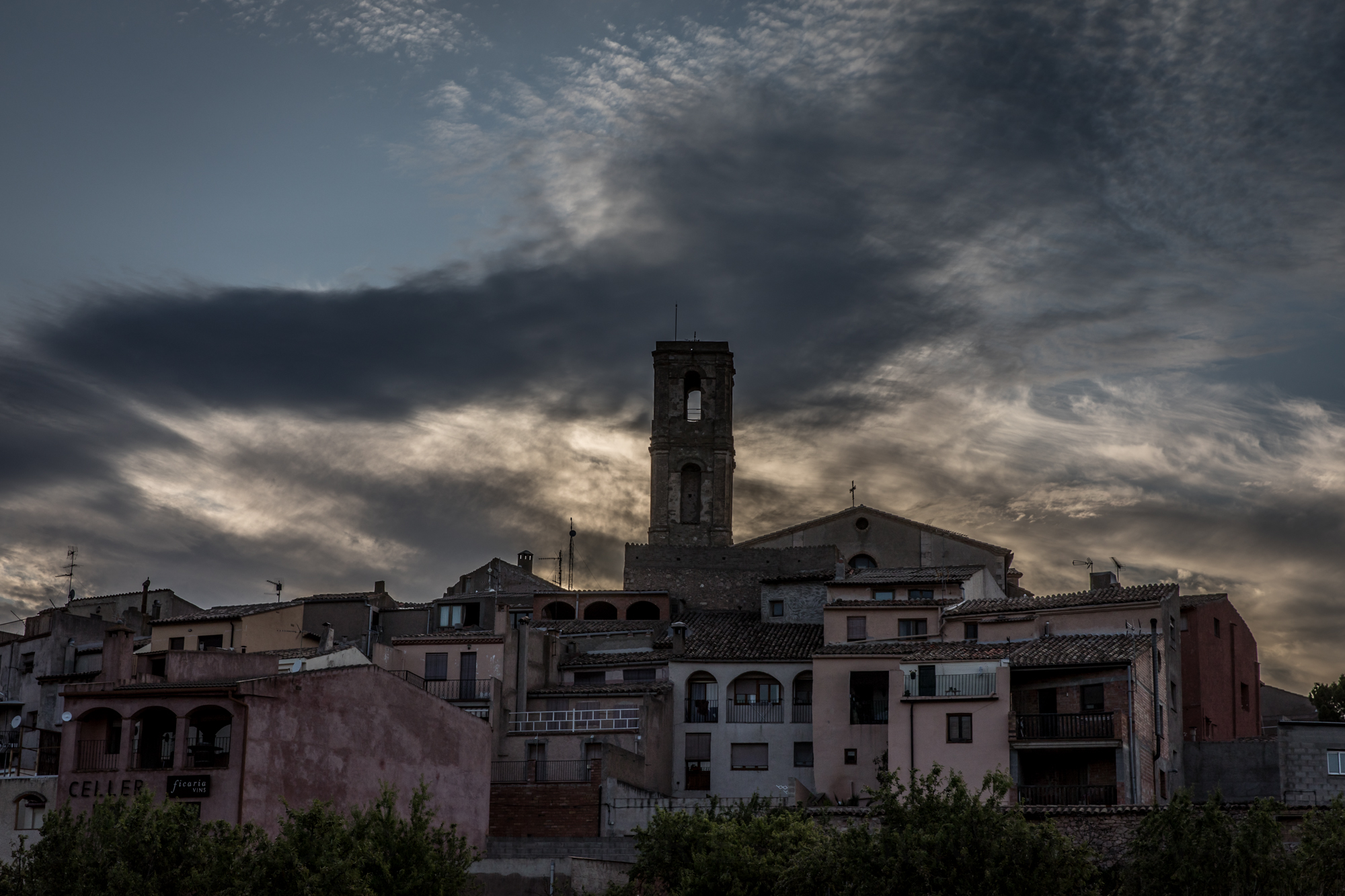


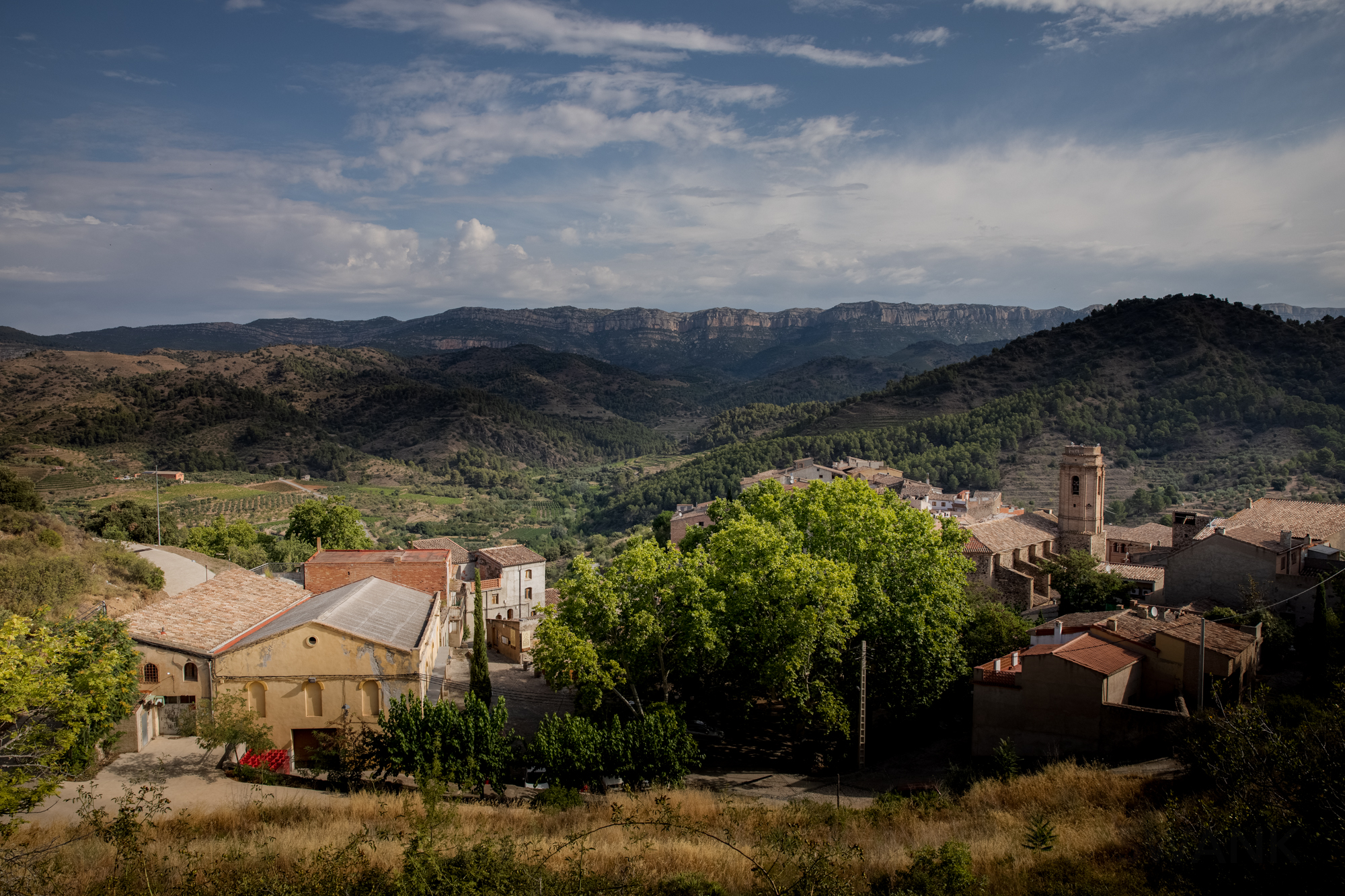





Cicadas buzz in the pine trees. Goldfinches dive and soar in the cobalt sky. Is this the most wonderful vineyard on earth? If not, few rival it.
Welcome to Priorat.